Chemistry and Chemists № 3 2023
Journal of Chemists-Enthusiasts
| Content | Chemistry experiments - video | Physics experiments - video | Home Page - Chemistry and Chemists |
|
Chemistry and Chemists № 3 2023 Journal of Chemists-Enthusiasts |
Flowers change colour: effect of alkalis and acids on plant dyes - pt.10, 11 В.М. Вітер |
|
Having noticed a mistake in the text, allocate it and press Ctrl-Enter
Ageratum Houstonianum: flowers become like green moss - pt.10
Ageratum Houstonianum is an ornamental plant which is widely grown in flower beds and gardens. The violet flowers of this plant were used for the next experiments. An ammonia solution was poured into the bottom of a glass, the flowers was placed in the glass. In an atmosphere of ammonia, the violet flowers became grey, then green. As a result, an inflorescence looked like green moss. The green flowers were placed in the new glass, then glacial acetic acid was added. The colour gradually changed to violet, then to pink and, finally - to pink-orange. New violet flowers of Ageratum Houstonianum were placed into the same beaker with glacial acetic acid. The flowers turned pink, then they turned pink-orange. After that, the flowers of Ageratum Houstonianum were being completely immersed into glacial acetic acid for 1 hour. The pink-orange solution was formed. This solution was used for the next experiment. A concentrated ammonia solution was gradually added to the solution of the plant dye (in acetic acid). Fist, the pink-orange solution turned colourless then it became a bright greenish-yellow colour (final pH was 9-10). Then concentrated hydrochloric acid was slowly added. The bright greenish-yellow solution first turned pale yellow then turned pale orange (unfortunately, during our experiment, the solution was diluted, so all colours turned pale). The final pH was <=1. ***
Клумба - значит, клумба. Рядом с красной сальвией (Salvia Splendens) посадили фиолетовые цветы, по отдельности они выглядят невзрачно, зато сплошной "фиолетовый ковер" - смотрится красиво. Не устоял и сорвал несколько цветов, разумеется. Уже после экспериментов воспользовался On-line сервисом распознания видовой принадлежности растений по фотографии. Оказалось, это Ageratum Houstonianum (commonly known as flossflower, bluemink, blueweed, pussy foot or Mexican paintbrush) - Агератум Гаустона, или Агератум Мексиканский. |
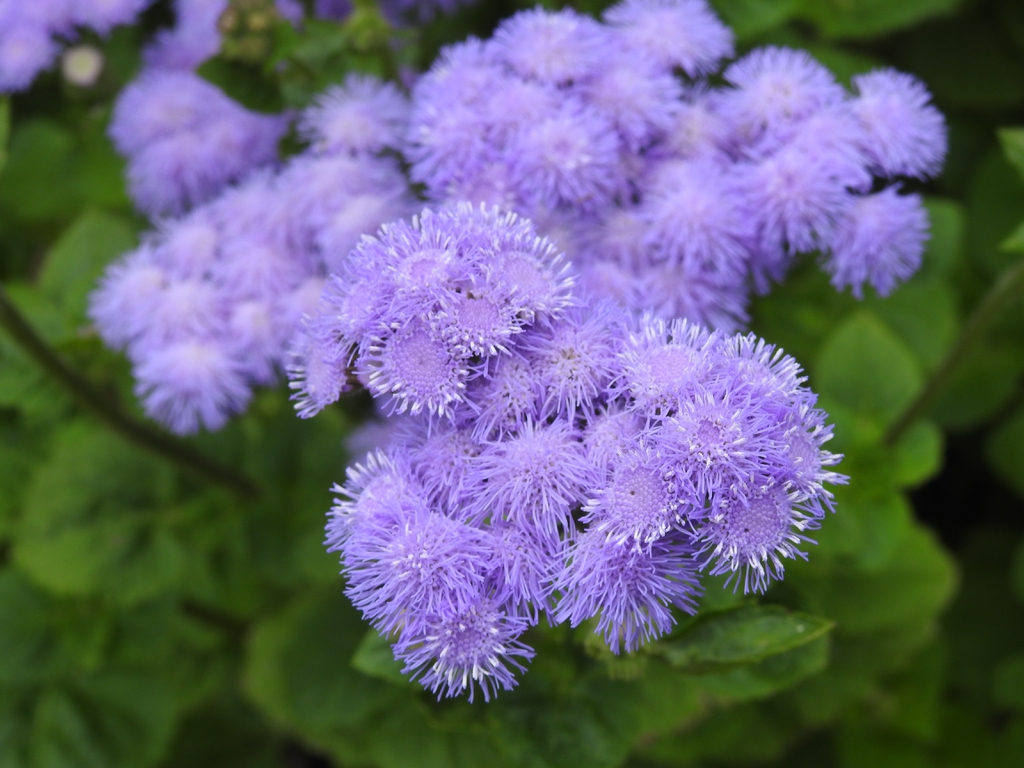
Ageratum Houstonianum |
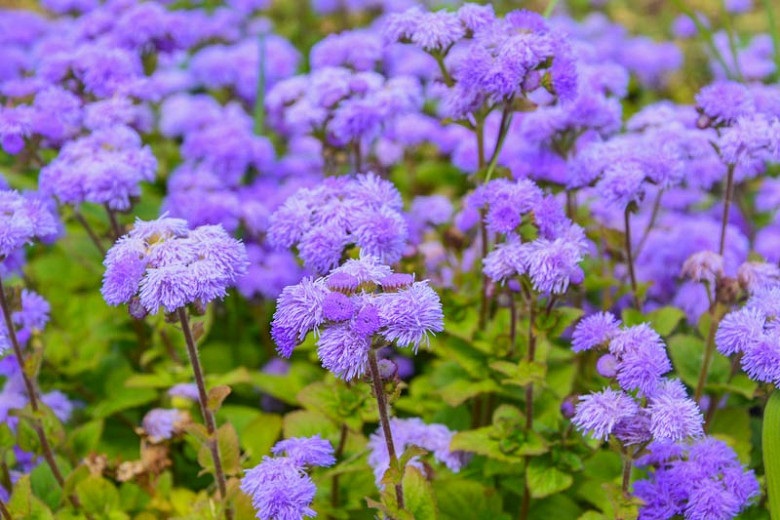
|
|
Прикрепил соцветие Ageratum Houstonianum к пинцету, опустил в стакан на 350 мл, осторожно пипеткой добавил на дно стакана концентрированный раствор аммиака. Нижняя часть соцветия контактировала с раствором, большая часть цветов - была выше уровня жидкости, но находилась в атмосфере паров аммиака. Нижняя часть цветов начала становиться серой, потом - зеленой. Постепенно трансформация цвета продвигалась снизу вверх. Разумеется, это не был сплошной фронт: возникали фиолетовые островки, которые некоторое время сохранялись в окружении зеленых участков.
Цветы стали похожи на зеленый мох. Подождал несколько минут, не будет ли дальнейшей трансформации цвета? Пока - нет. Следующий вопрос: является ли изменение цвета обратимым? Для этого нужно подействовать на цветы кислотой. В этот раз вместо азотной или соляной кислот использовал более слабую - уксусную (чтобы избежать возможного разрушения пигмента/пигментов цветов сильными кислотами). Вынул цветы из стакана, поместил в другой (чистый) стакан. Осторожно добавил в него ледяную уксусную кислоту. Низ соцветия контактировал с кислотой непосредственно, остальная часть - с парами. Нижняя часть соцветия стала постепенно менять цвет - островками. Появились серые, розовые и фиолетовые зоны (серый - переходной цвет от щелочной формы красителя к исходной, фиолетовый - исходная форма, розовый - кислотная). Над поверхностью раствора трансформация цвета происходила медленно - пришлось оросить цветы уксусной кислотой из пипетки (набирал эту же кислоту - со дна стакана), что ускорило переход цвета. Дальше розовые зоны стали розово-оранжевыми (видимо, это и есть окончательный цвет пигмента в уксусной кислоте). Погрузил соцветие в кислоту полностью, рядом поместил в стакан новое (фиолетовое) соцветие Ageratum Houstonianum - так, чтобы с уксусной кислотой контактировал только низ, остальная часть - с парами. В этот раз цвет менялся медленно, чтобы не затягивать - оросил цветы кислотой из пипетки. В результате фиолетовый цвет перешел в розовый (и розово-оранжевый). Дальше это соцветие также погрузил в кислоту полностью, оставил на час. Уксусная кислота окрасилась в розово-оранжевый цвет: теперь можно экспериментировать с пигментом цветов непосредственно в растворе. По каплям стал добавлять концентрированный аммиак. Над поверхностью раствора образовался белый дым (ацетат аммония). Со временем раствор почти обесцветился. Но дальнейшие порции аммиака изменили цвет раствора на яркий зелено-желтый. Избыток аммиак уже не менял цвет раствора. Опустил универсальную индикаторную бумажку - рН 9-10. Теперь - понижение рН (щелочной раствор делаем кислым). Уксусной кислоты было мало, поэтому взял соляную. Уже при приближении пипетки с концентрированной соляной кислотой к раствору образовалось много белого дыма (хлорид аммония), еще больше дыма образовалось в процессе добавлении кислоты. Сначала зеленовато-желтый раствор стал бледно-желтым (почти обесцветился), а от дальнейшего прибавления кислоты раствор стал бледно-оранжевым. Точный цвет определить было трудно из-за сильного разбавления. - При титровании с индикаторами, если индикатора было добавлено слишком мало, имеет место аналогичная проблема. Конечный рН <=1. |
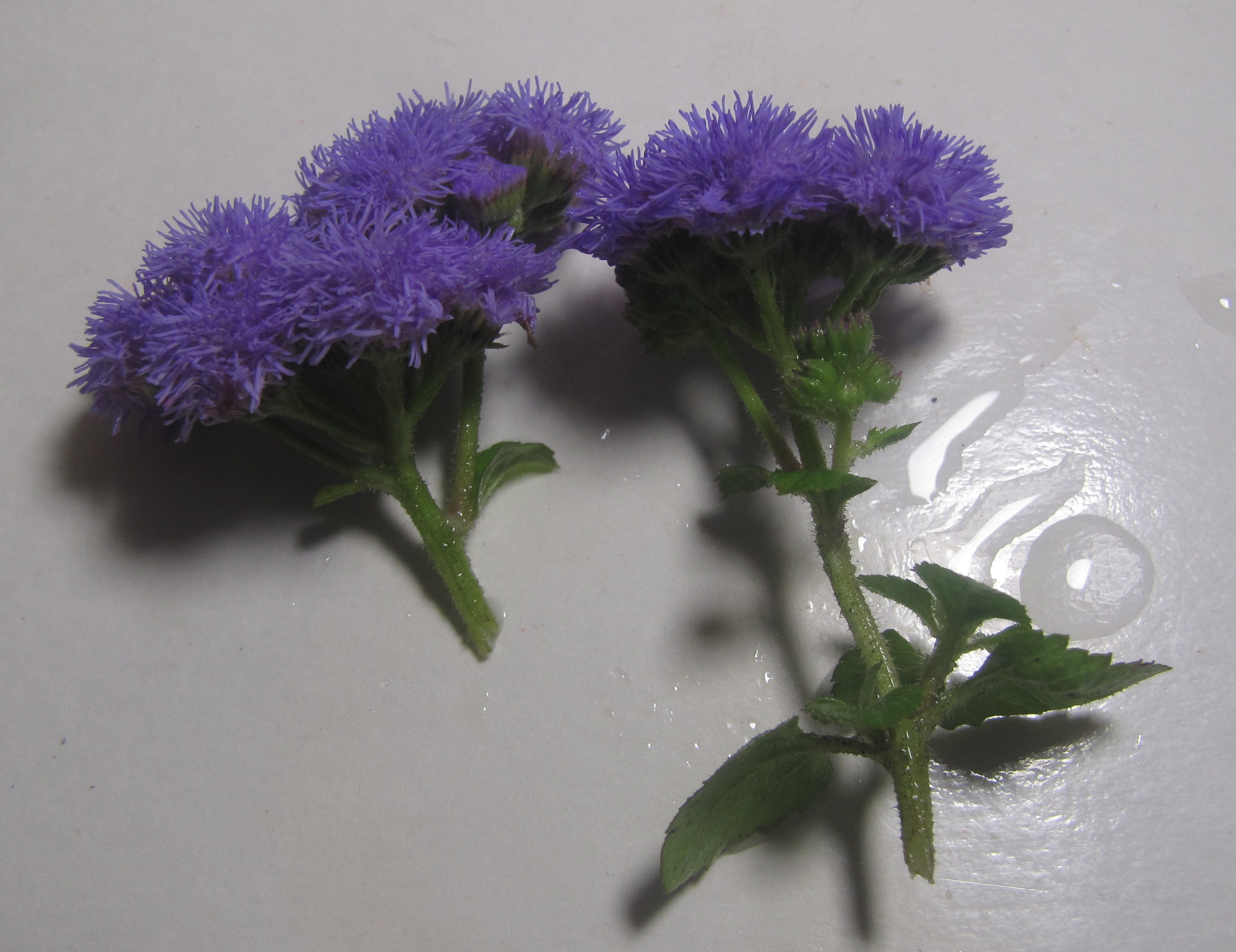
Ageratum Houstonianum |

|
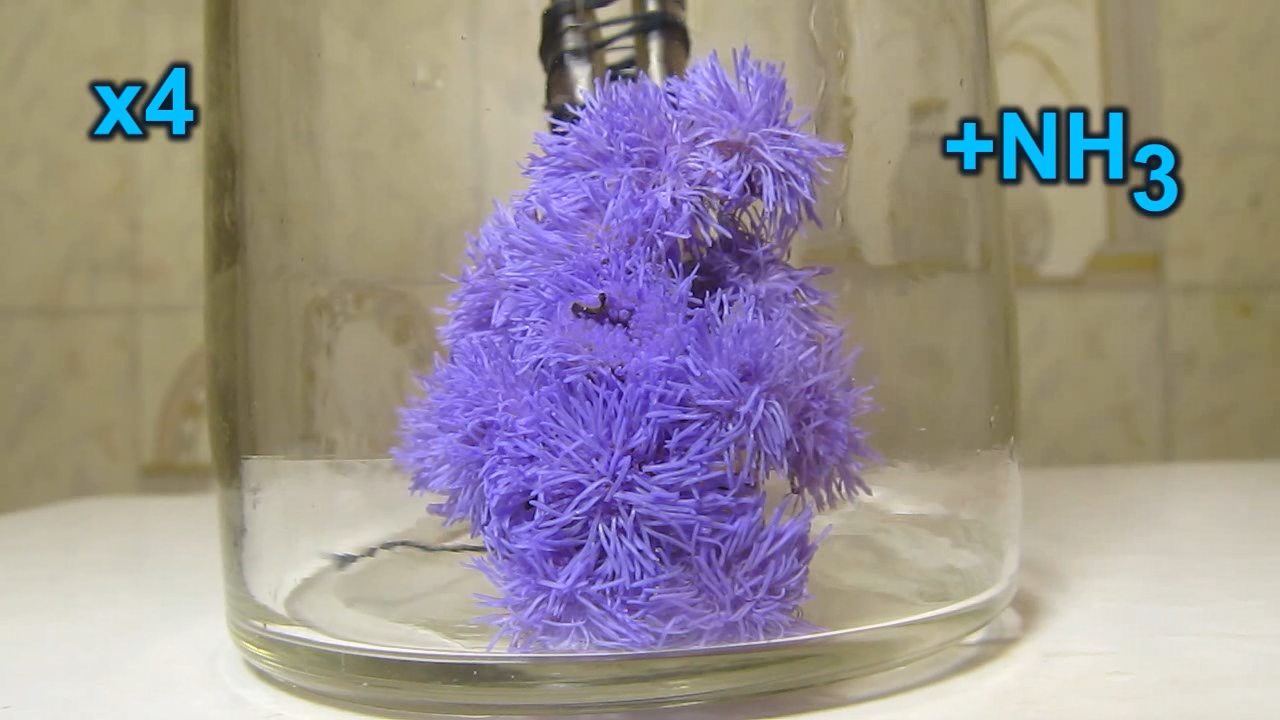
Ageratum Houstonianum flower, ammonia, acetic acid and hydrochloric acid |
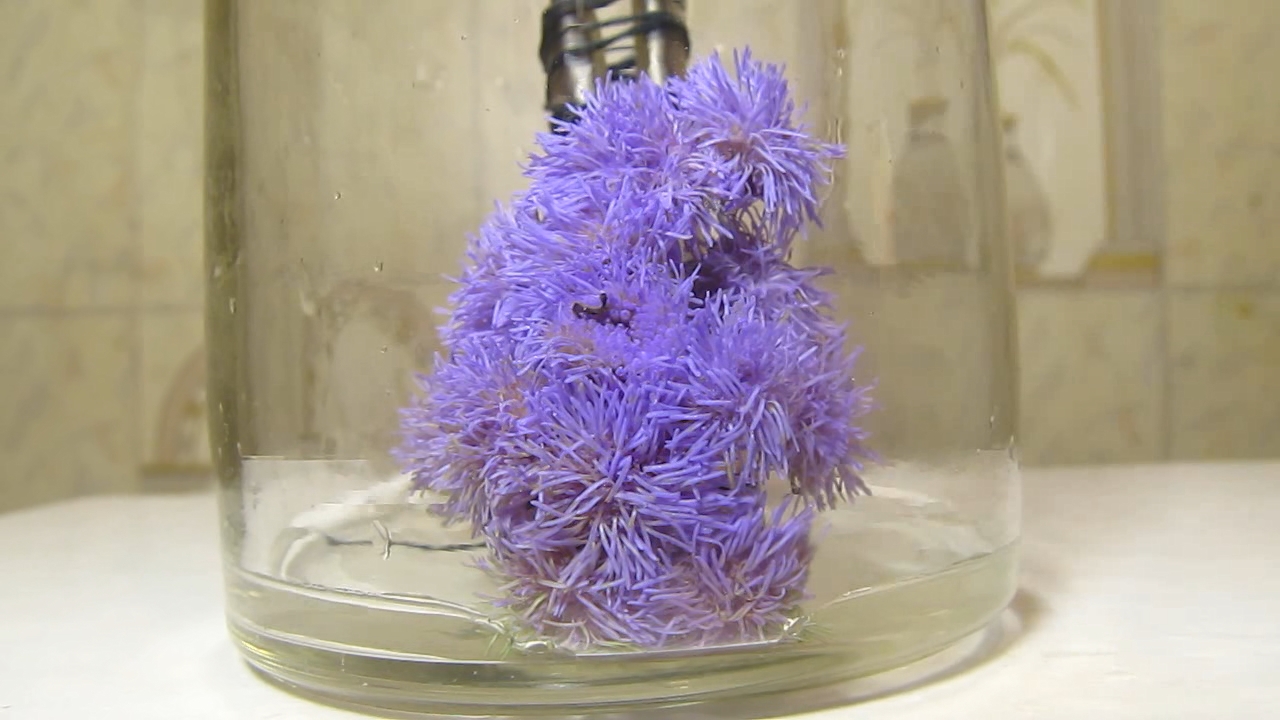
|
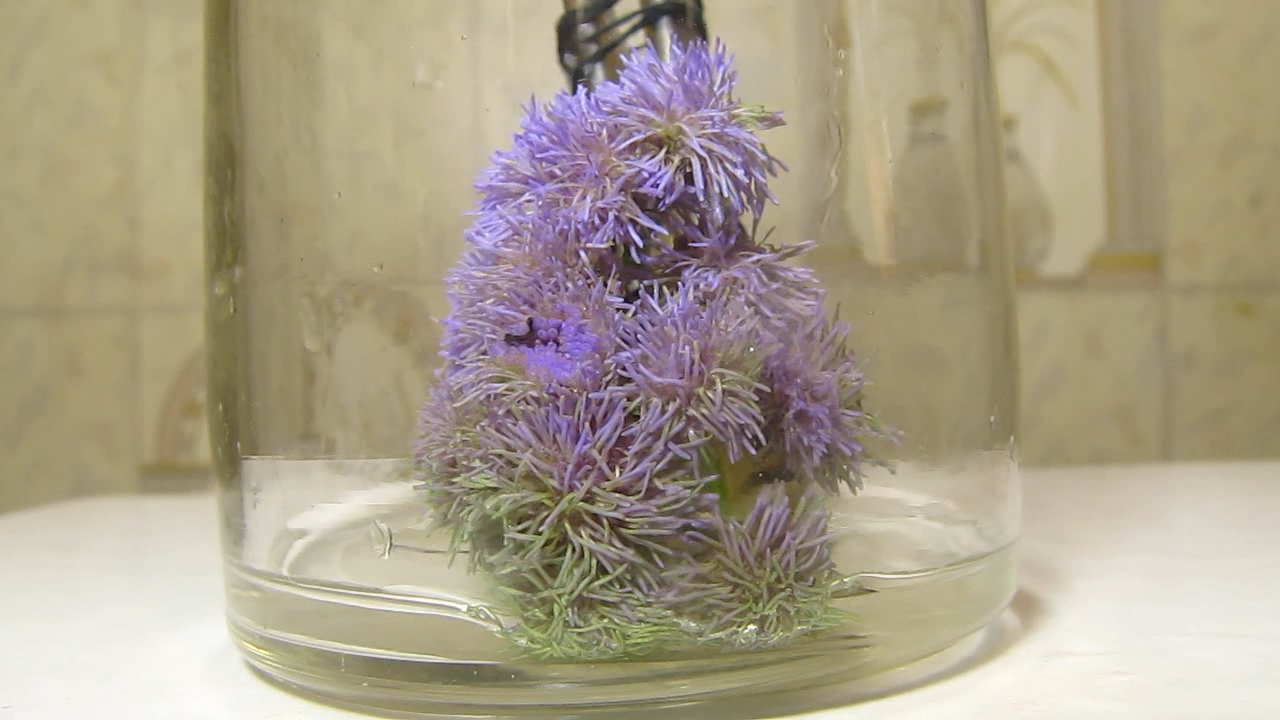
|
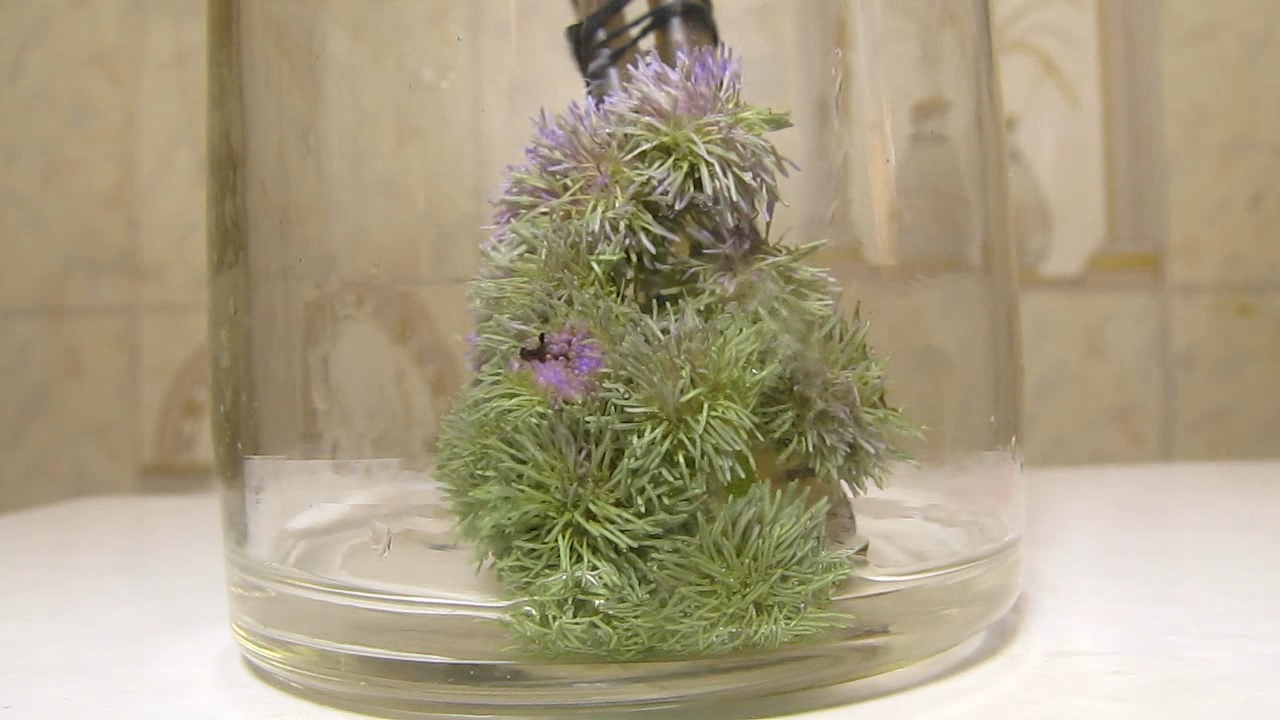
|

|
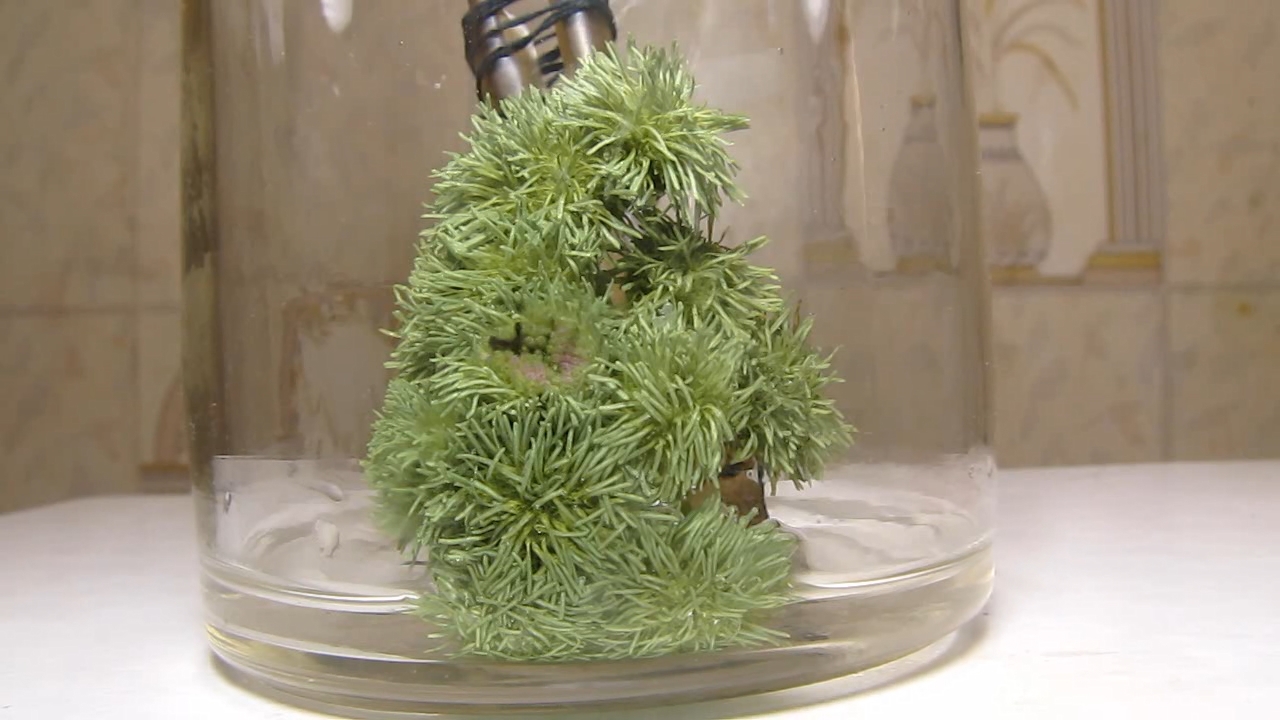
|
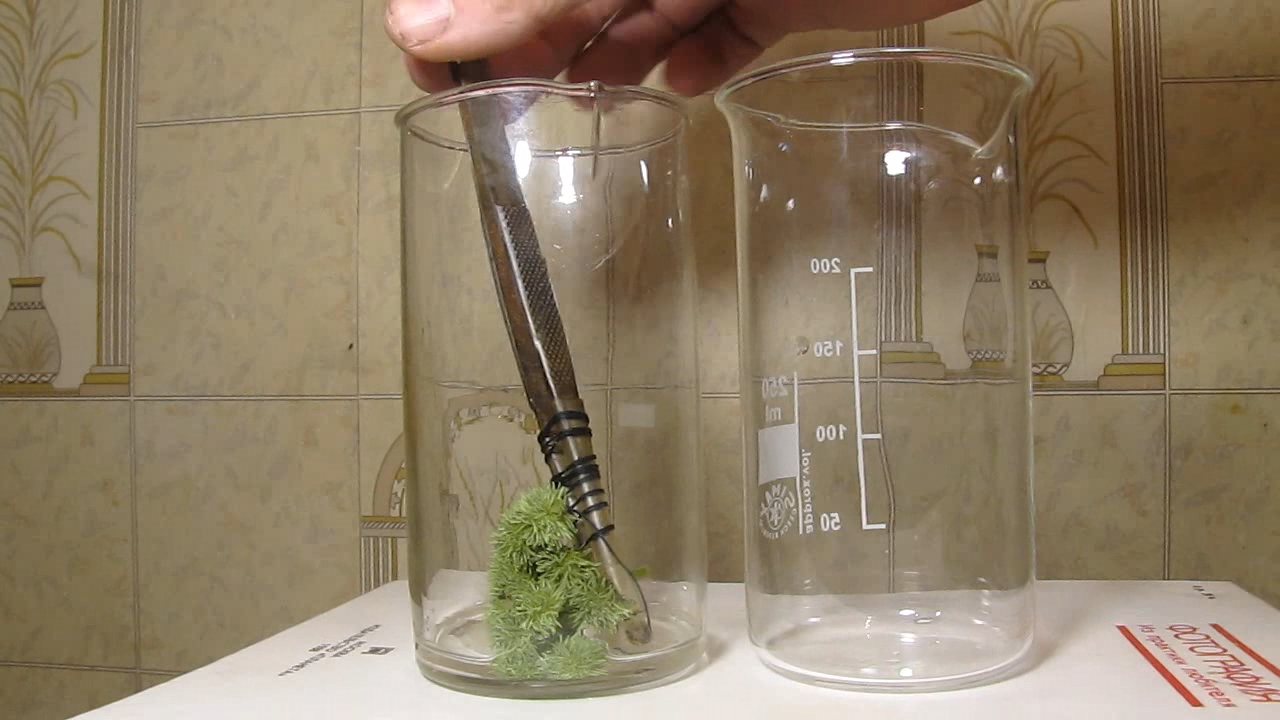
|
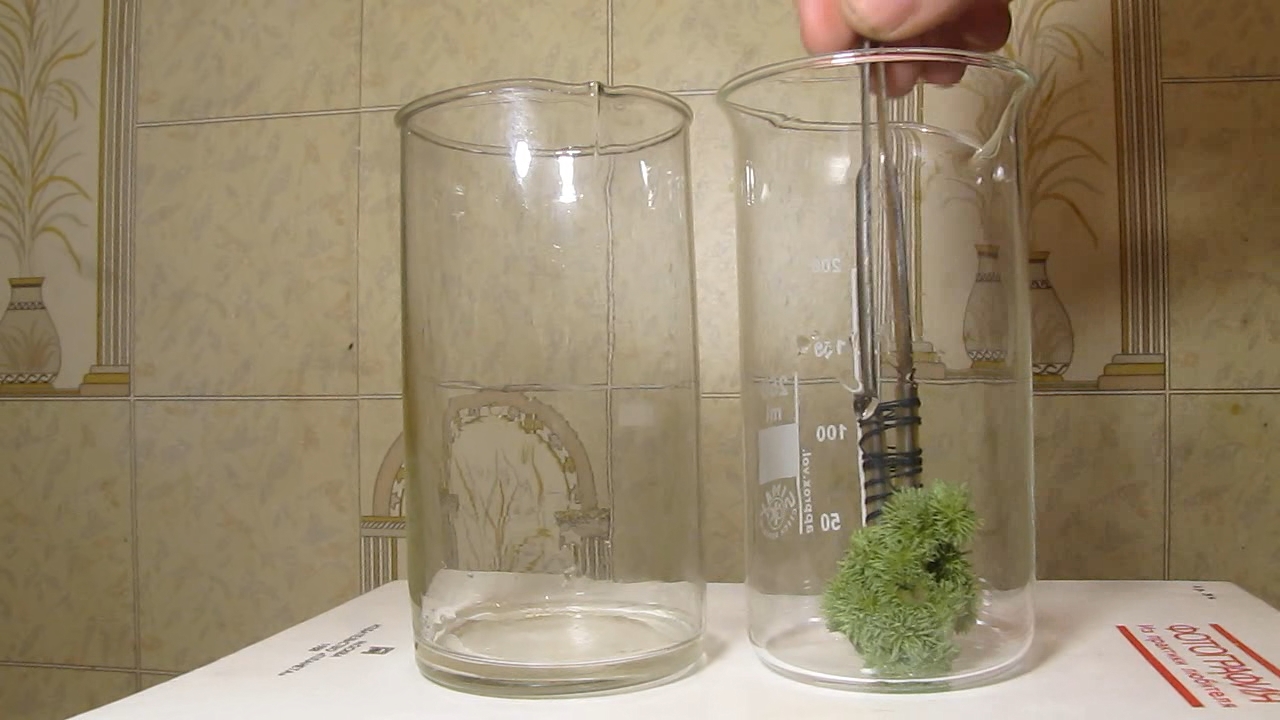
|
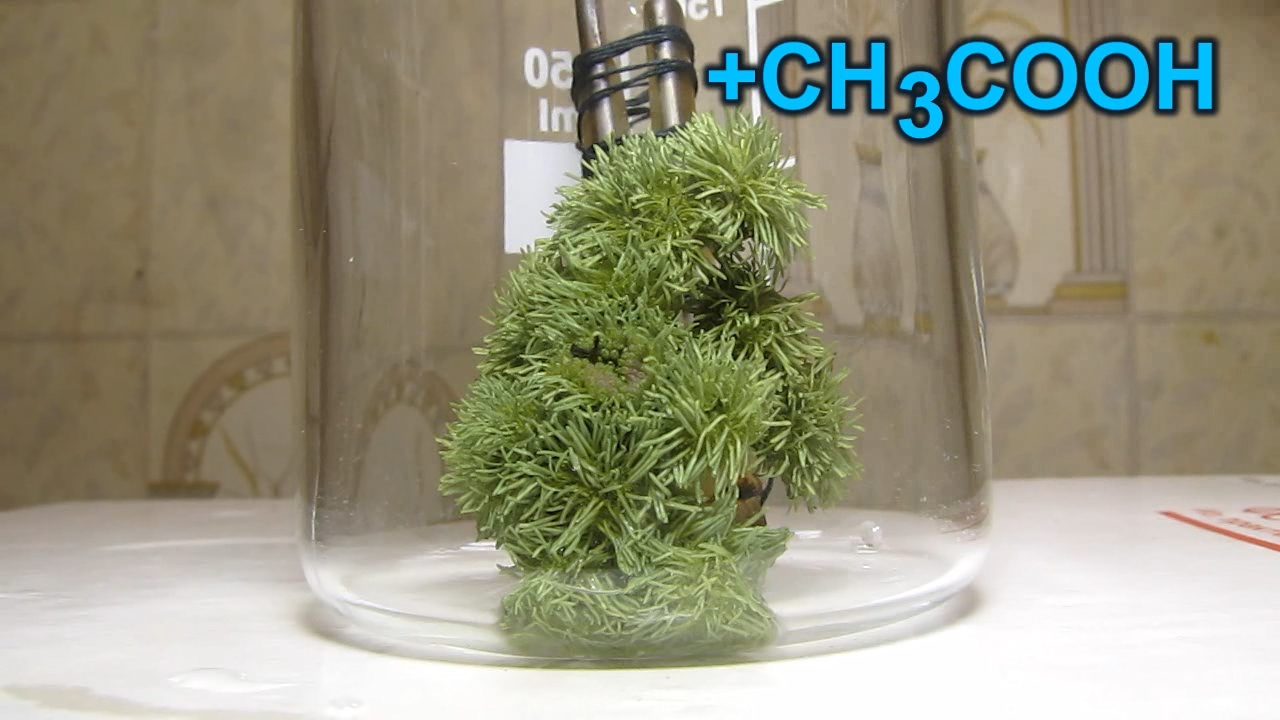
|

|

|
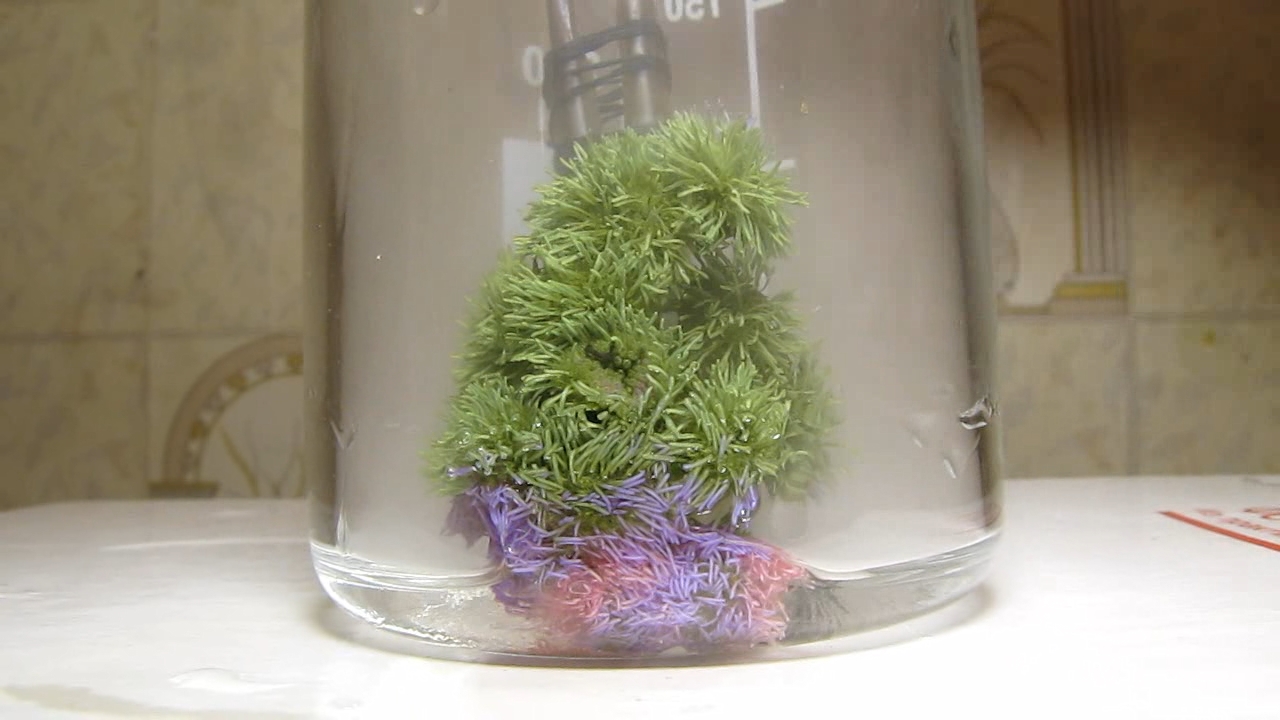
|
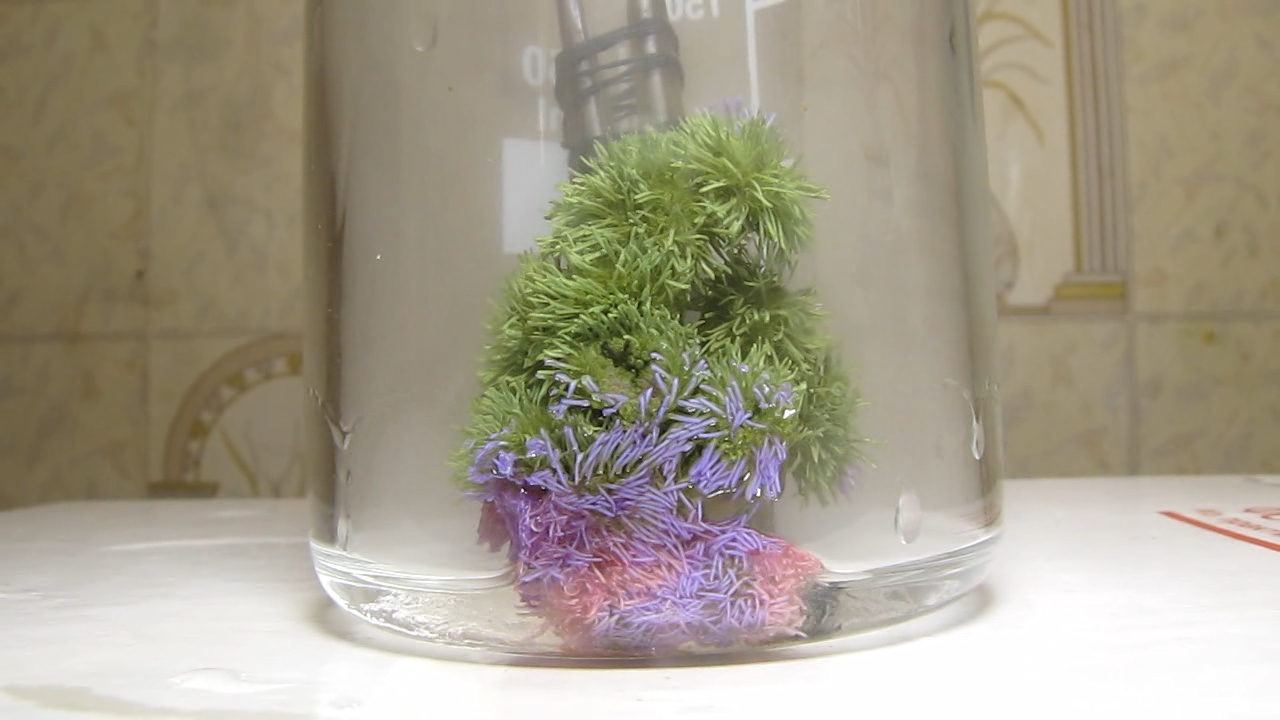
|
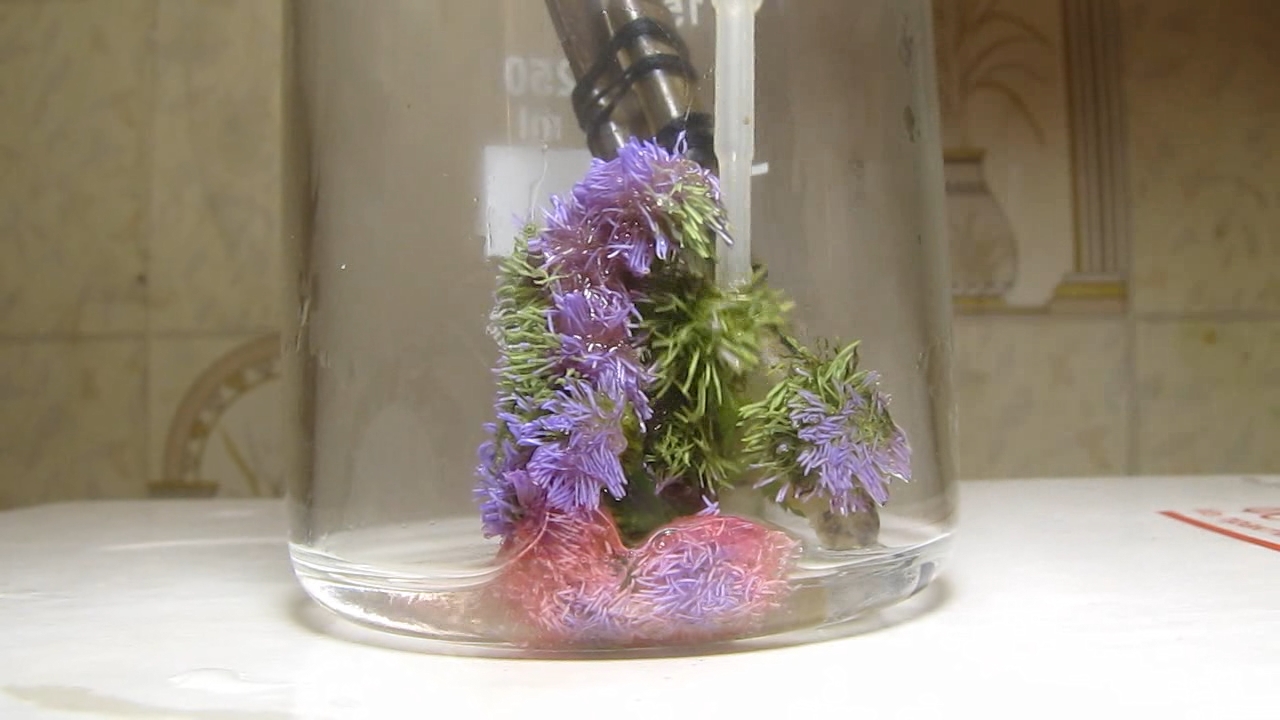
|
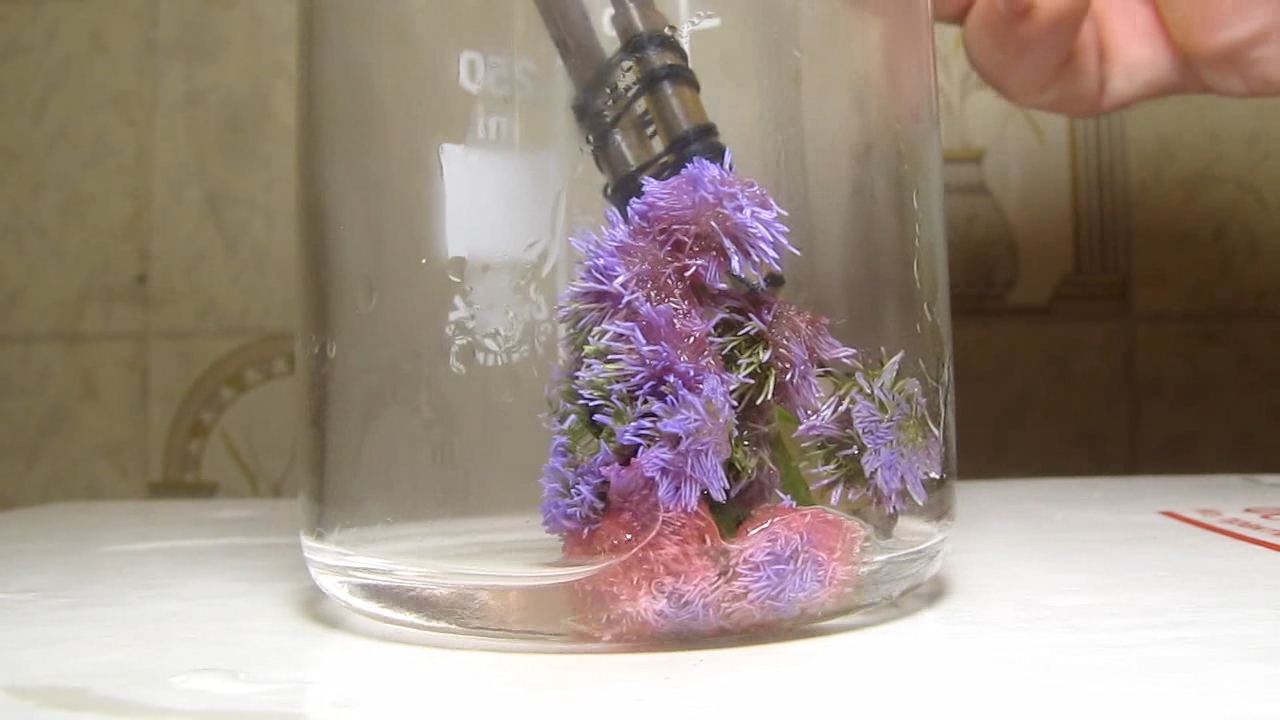
|

|

|

|

|
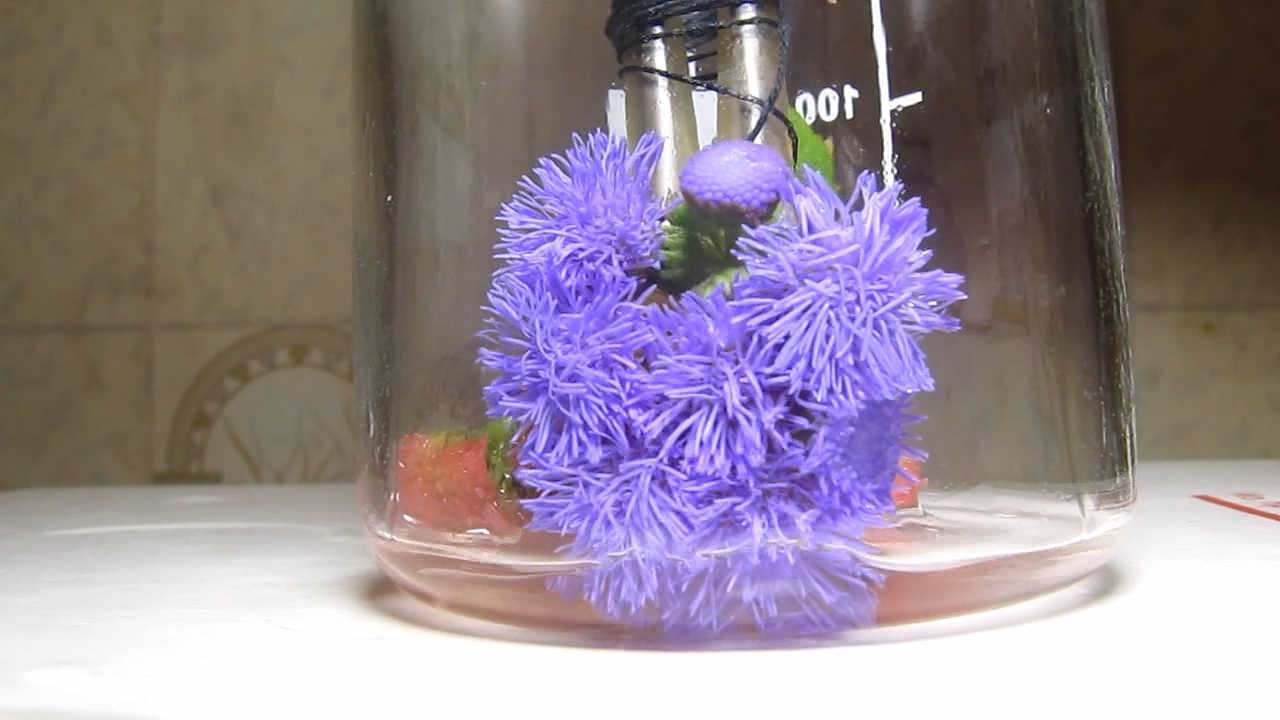
|
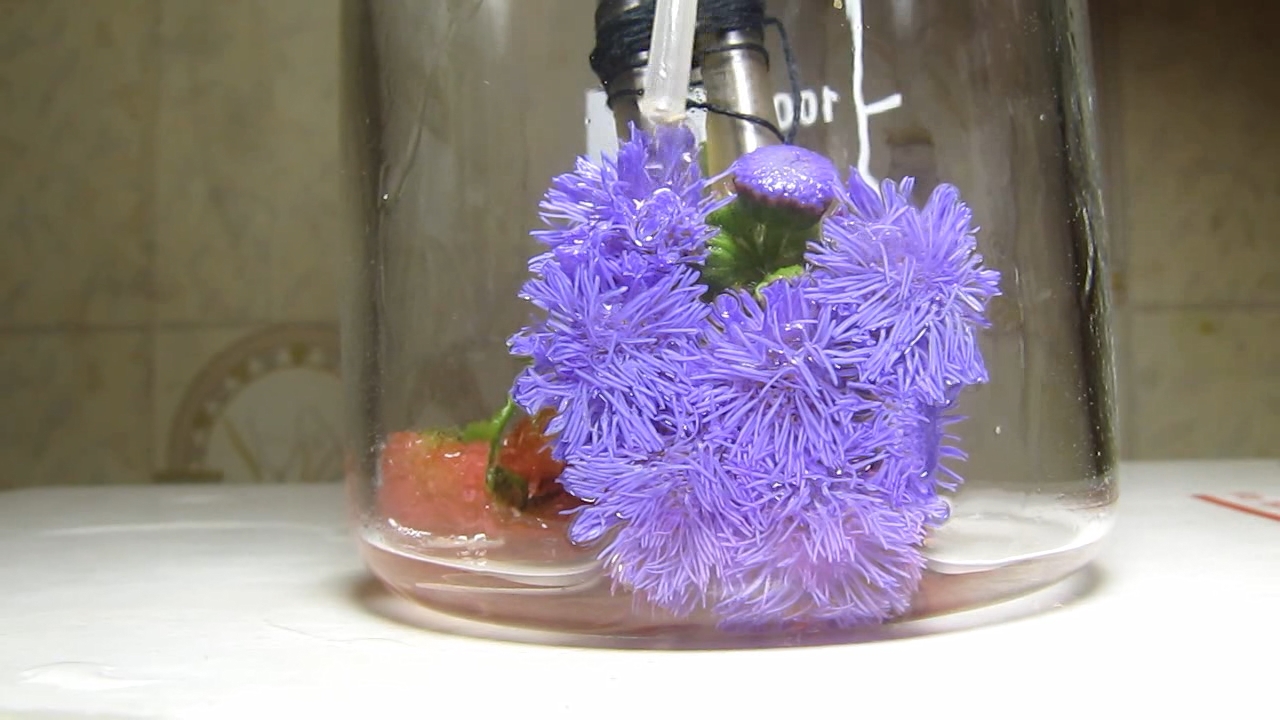
|
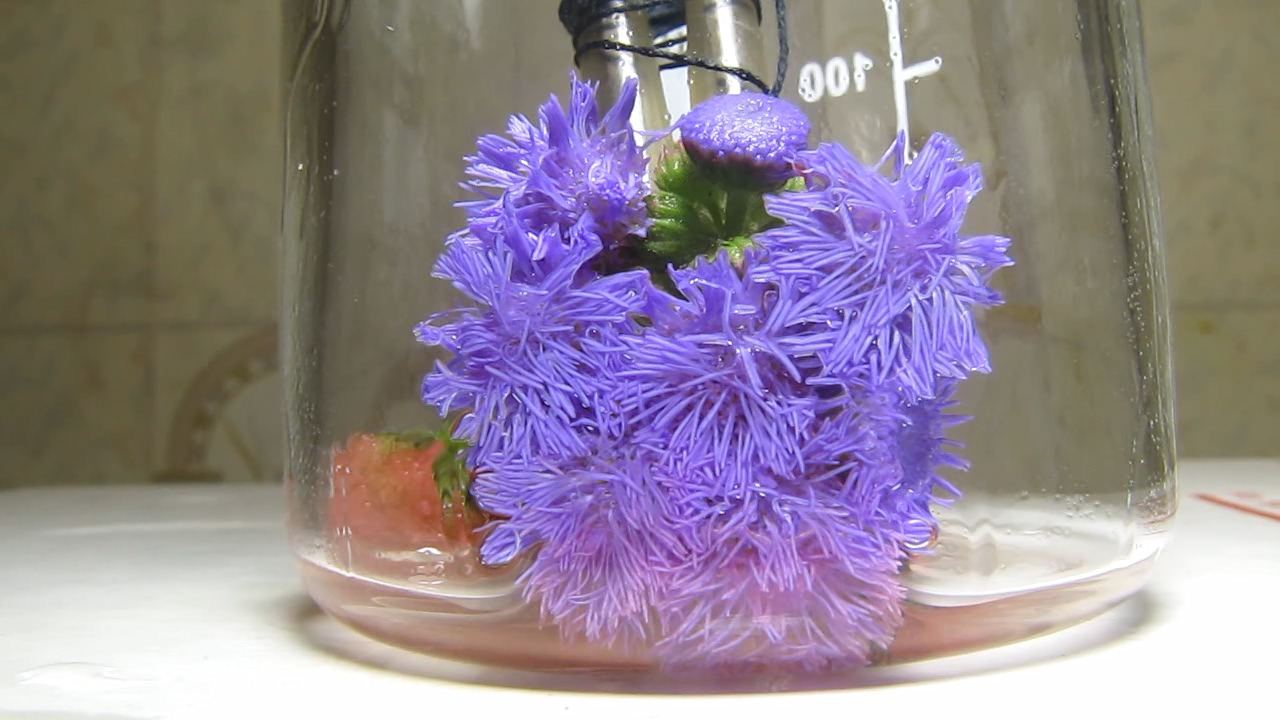
|
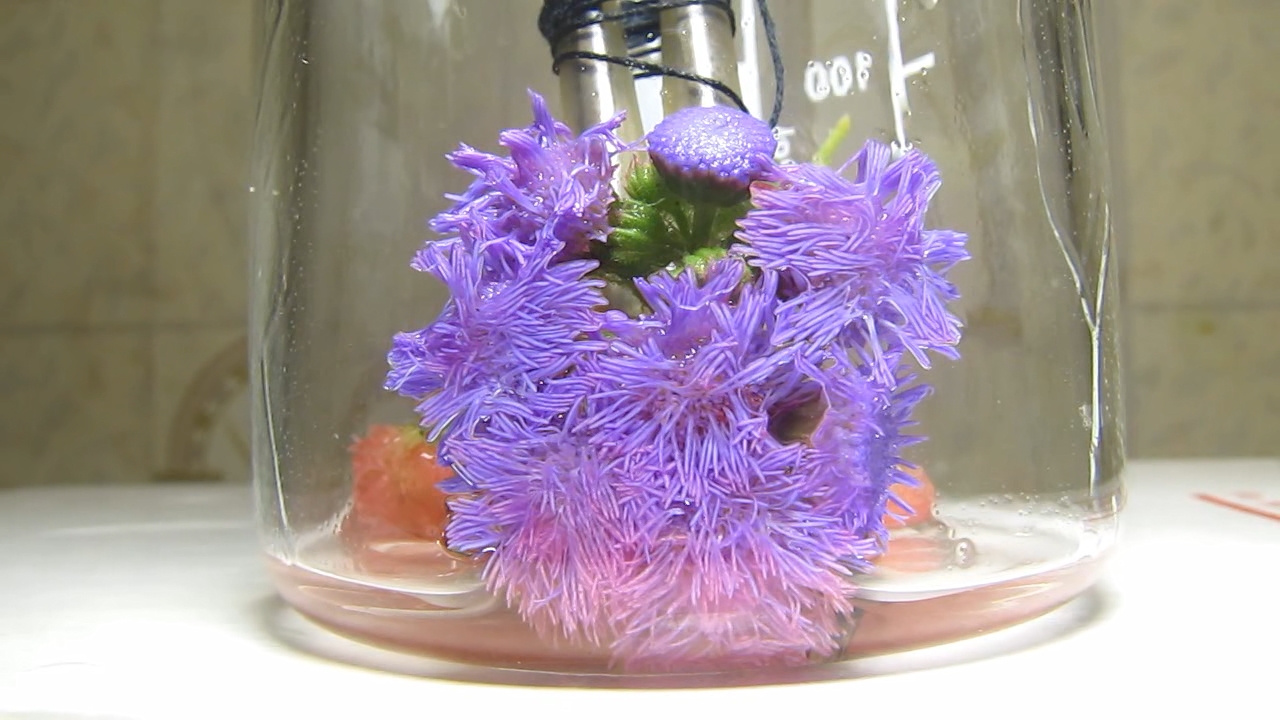
|
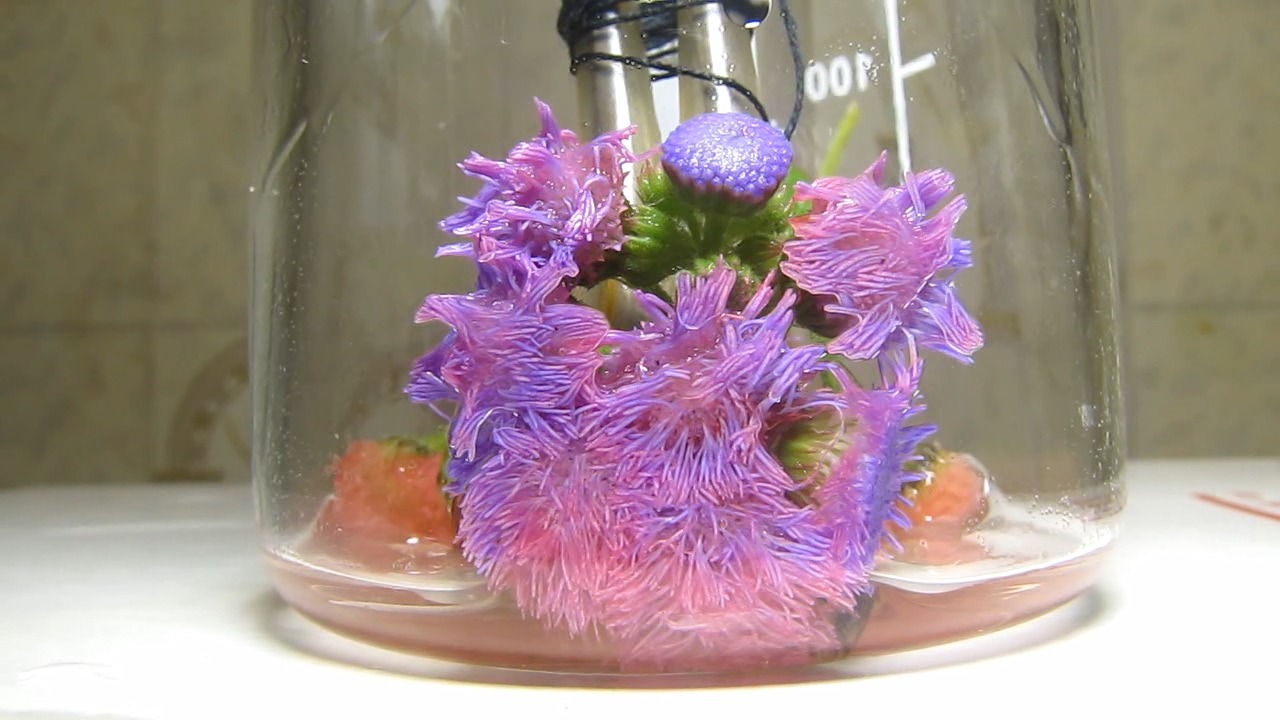
|
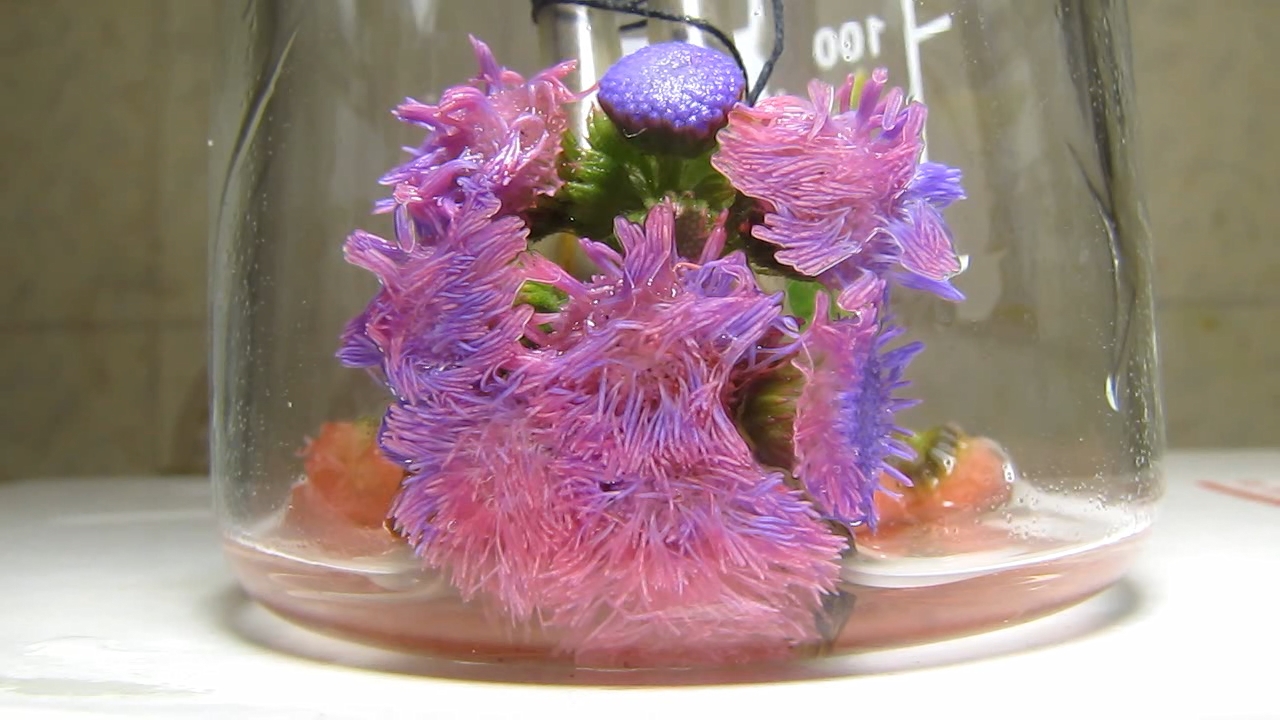
|

|
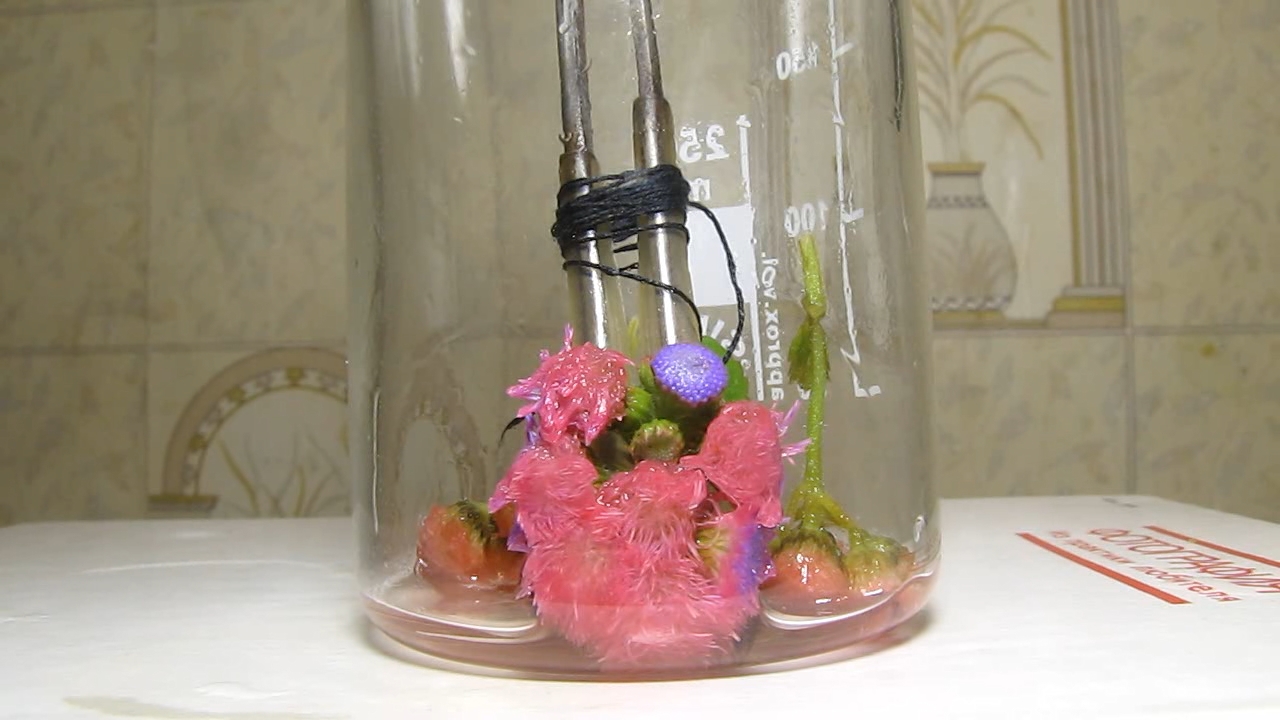
|

|

|
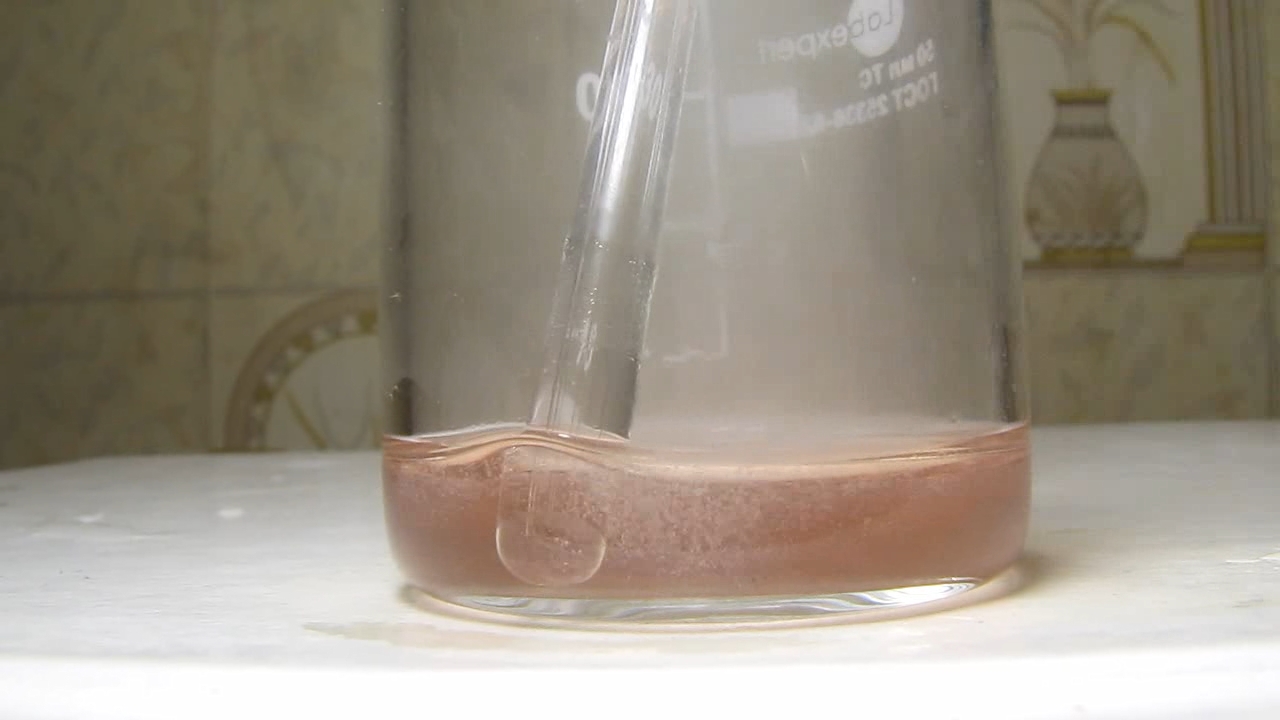
|
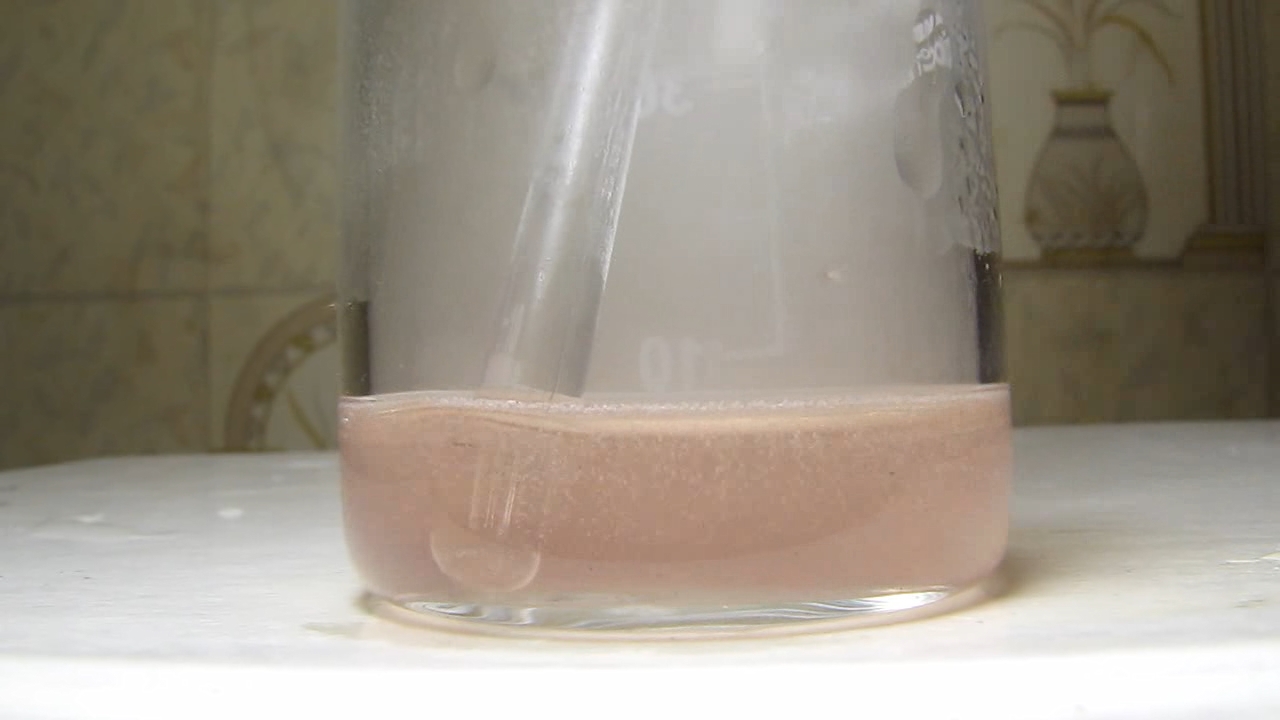
|
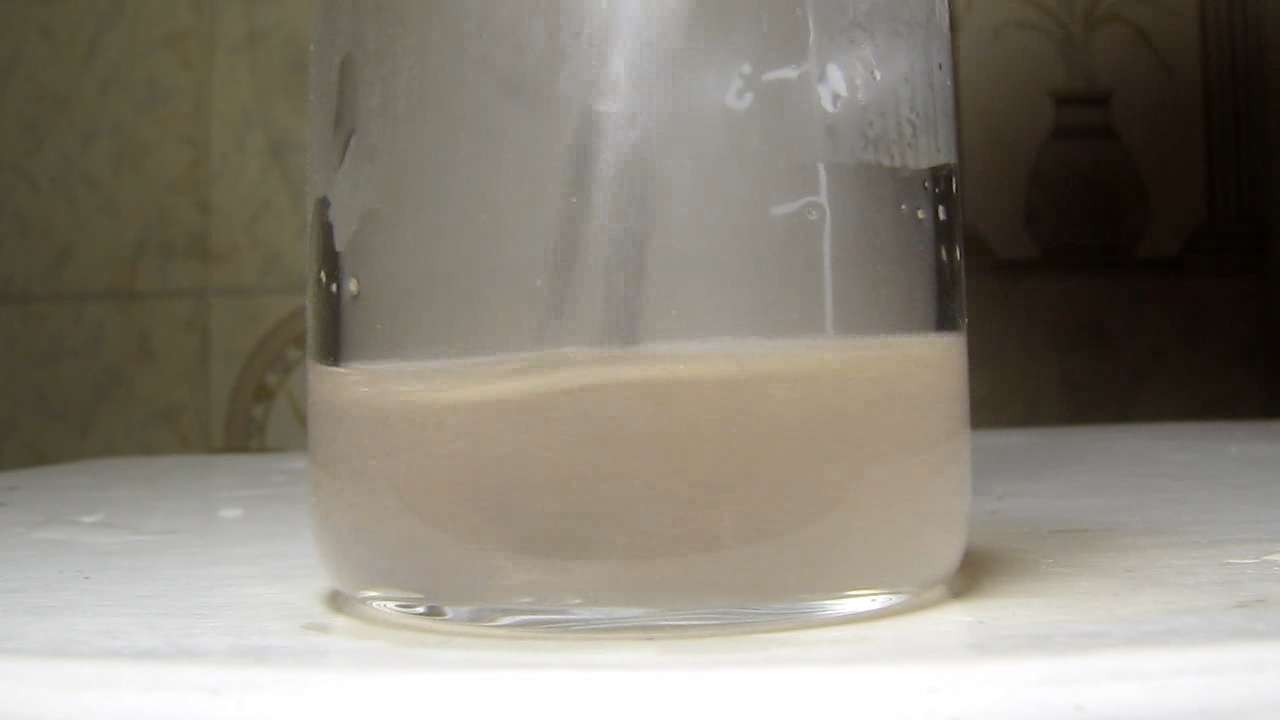
|
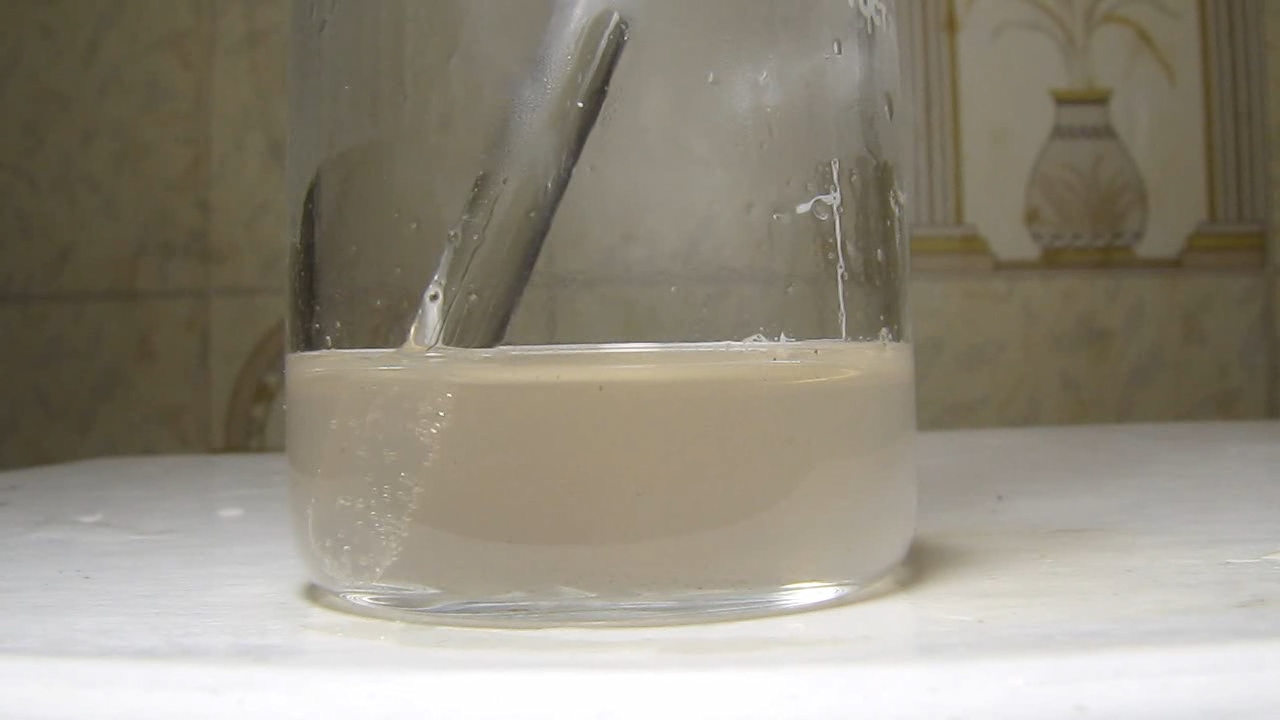
|
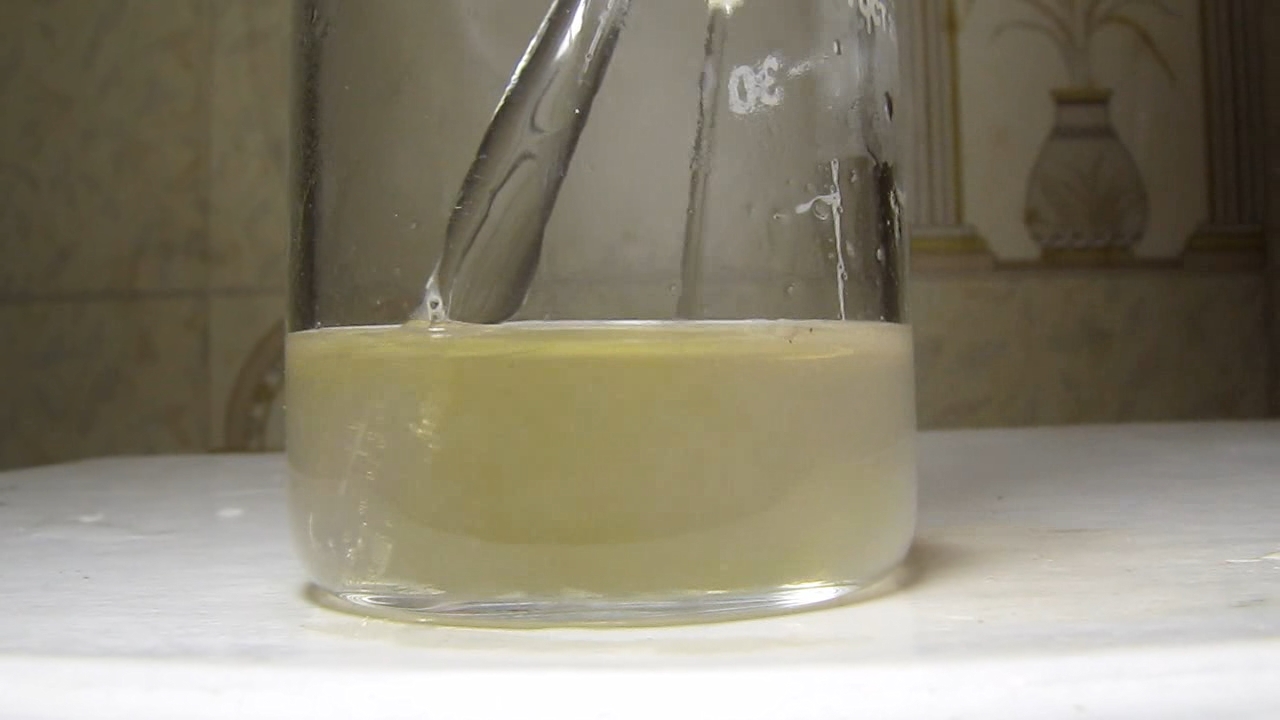
|

|
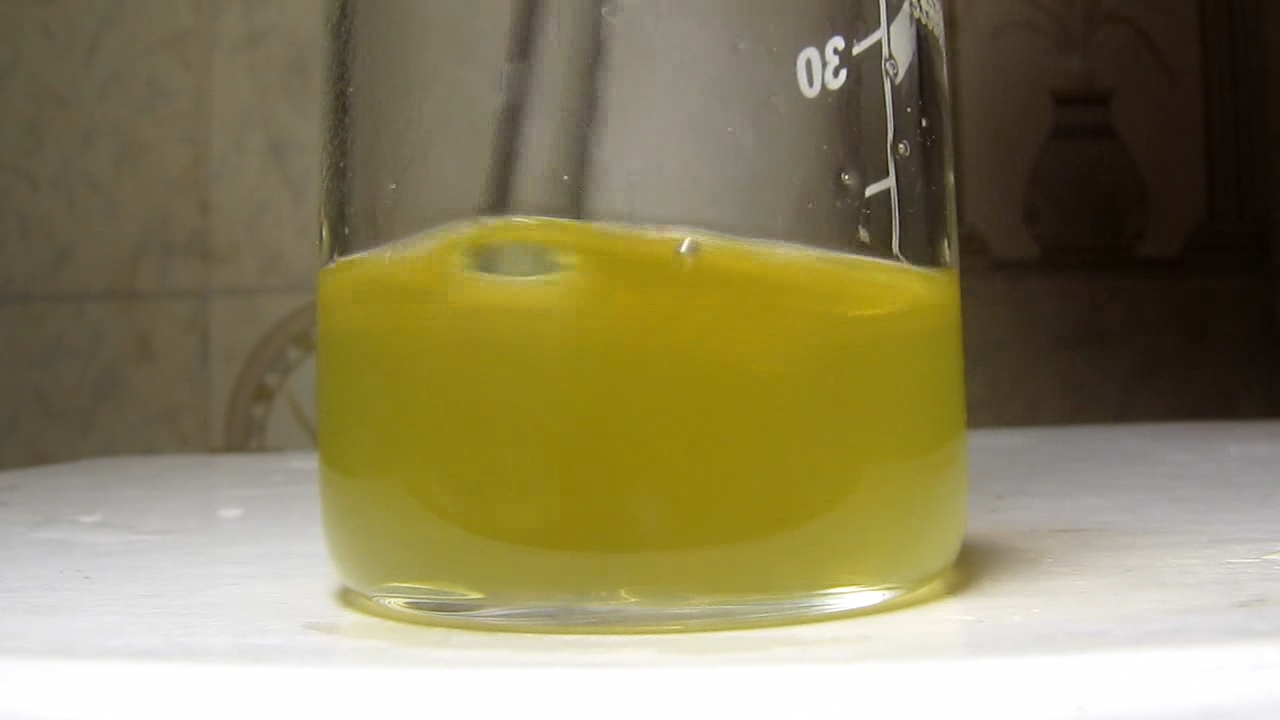
|
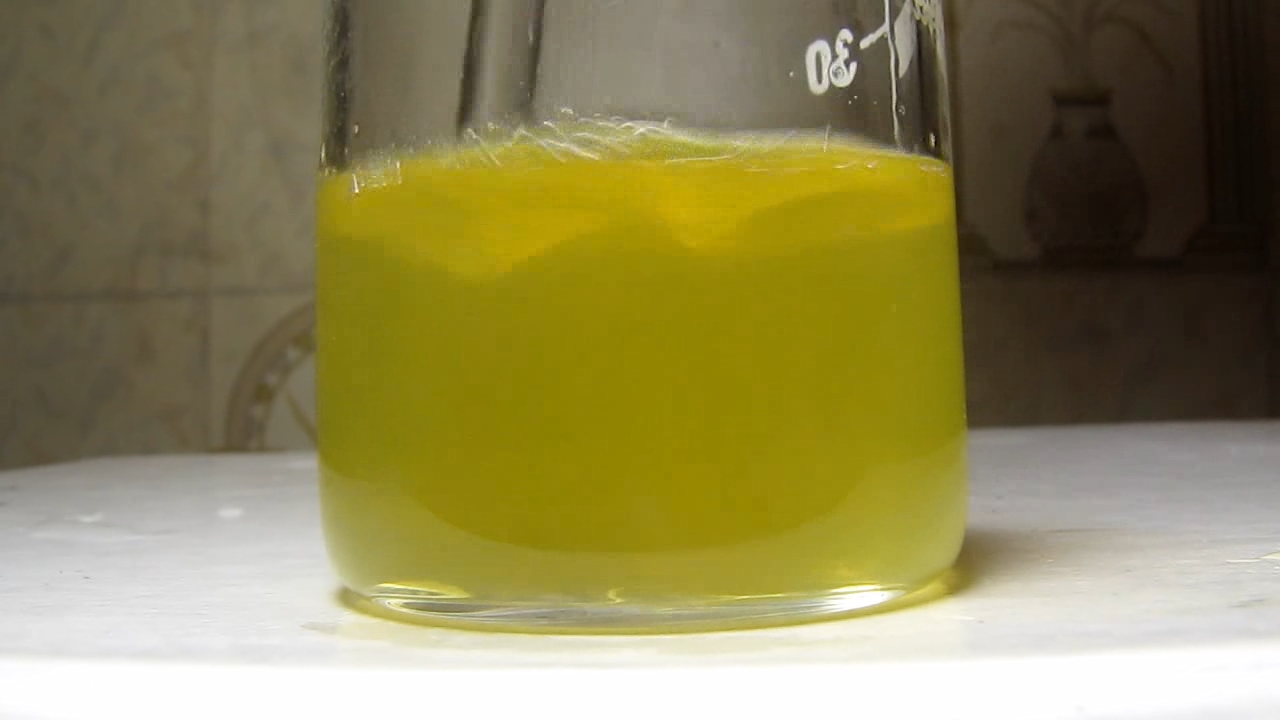
|

|
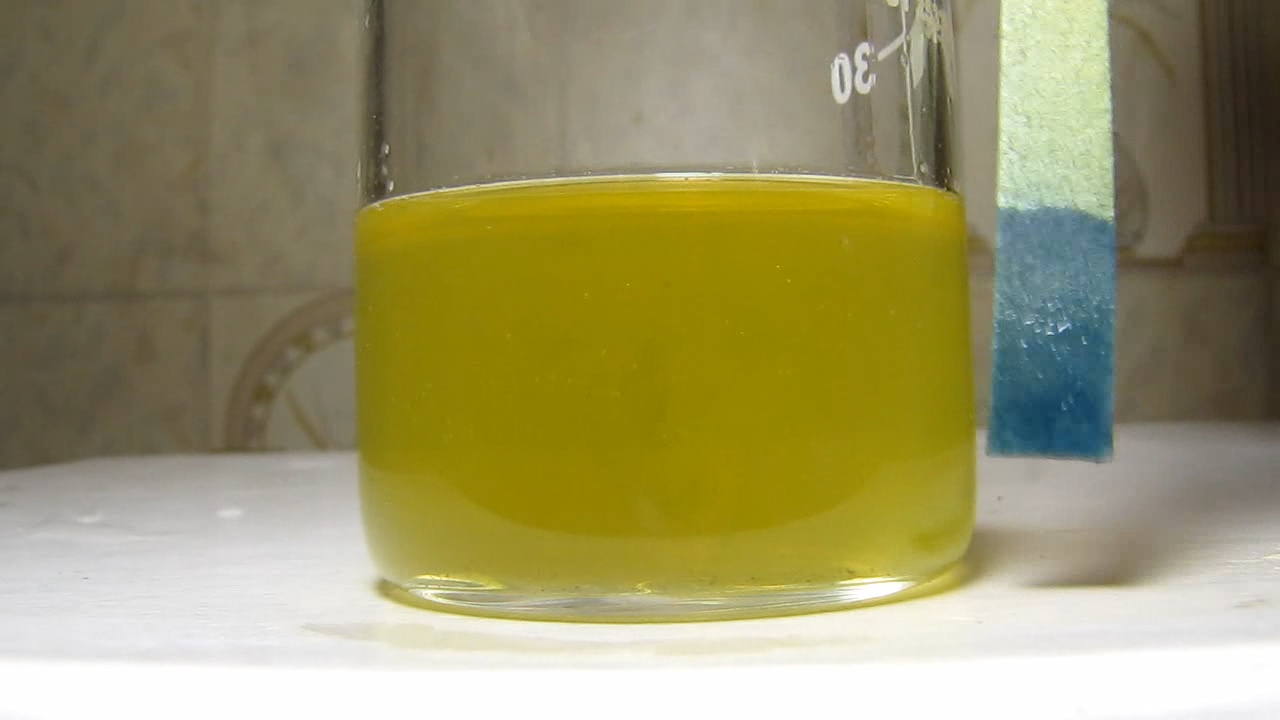
|
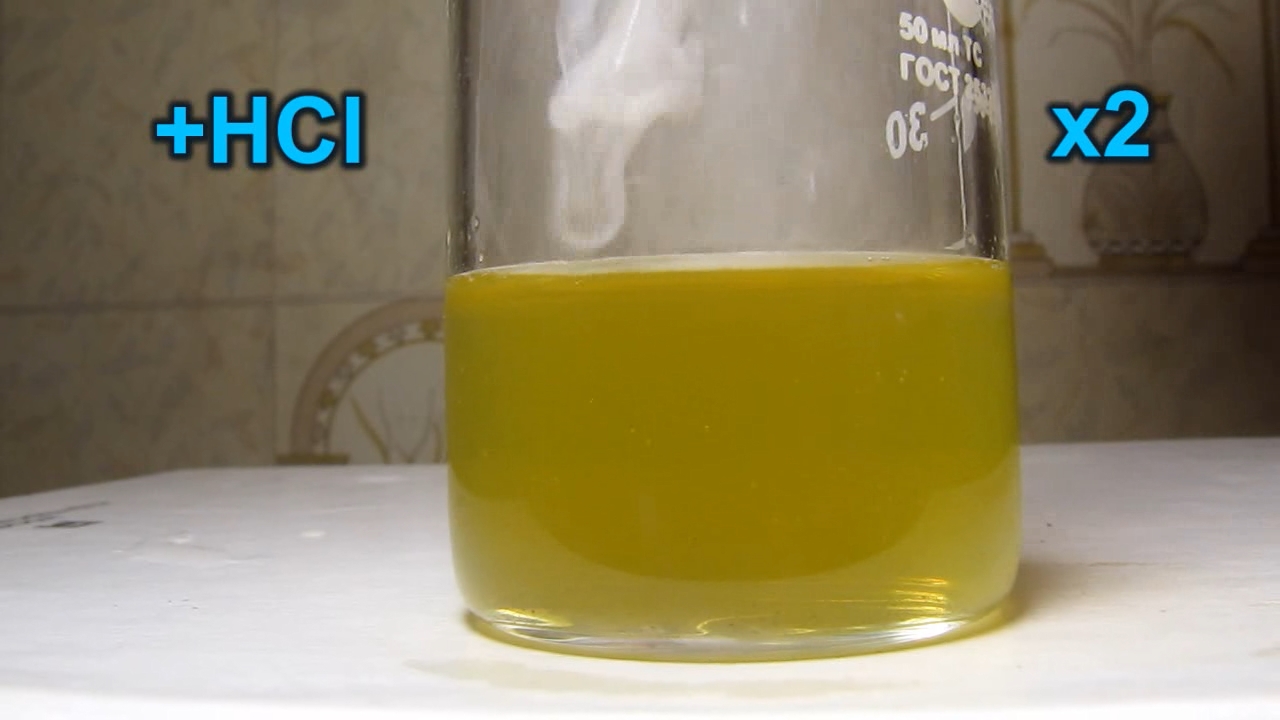
|
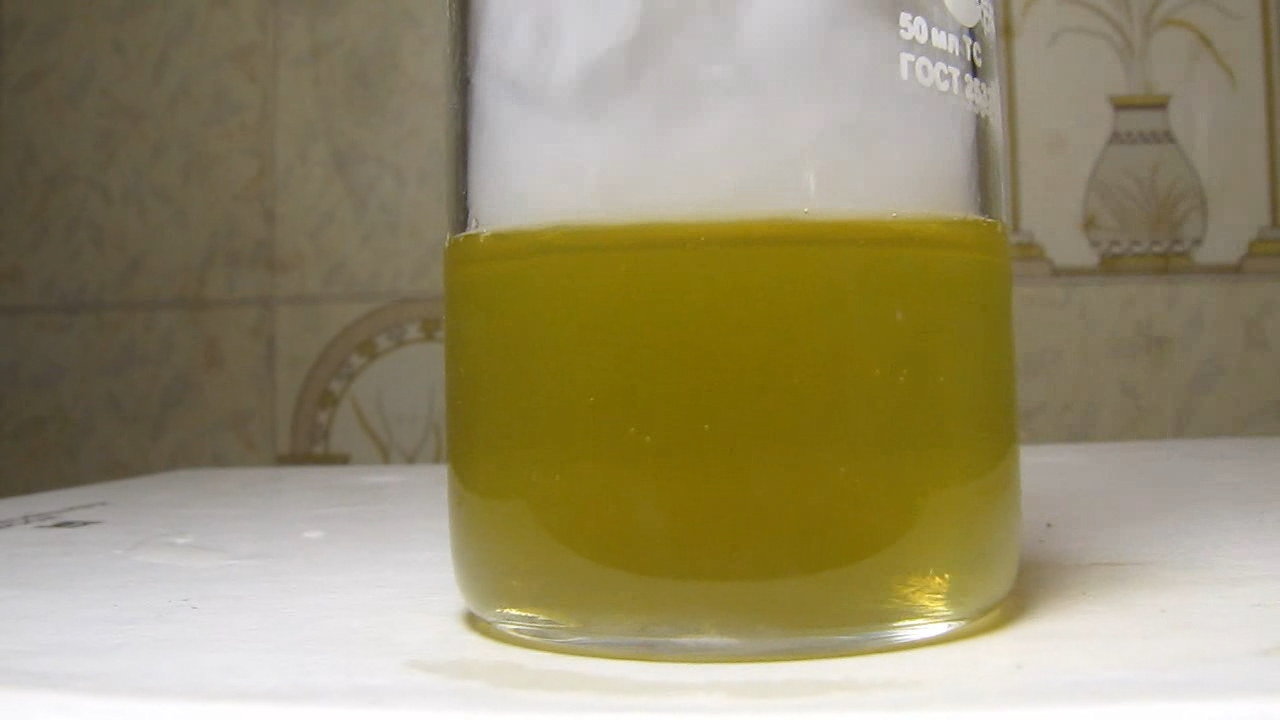
|
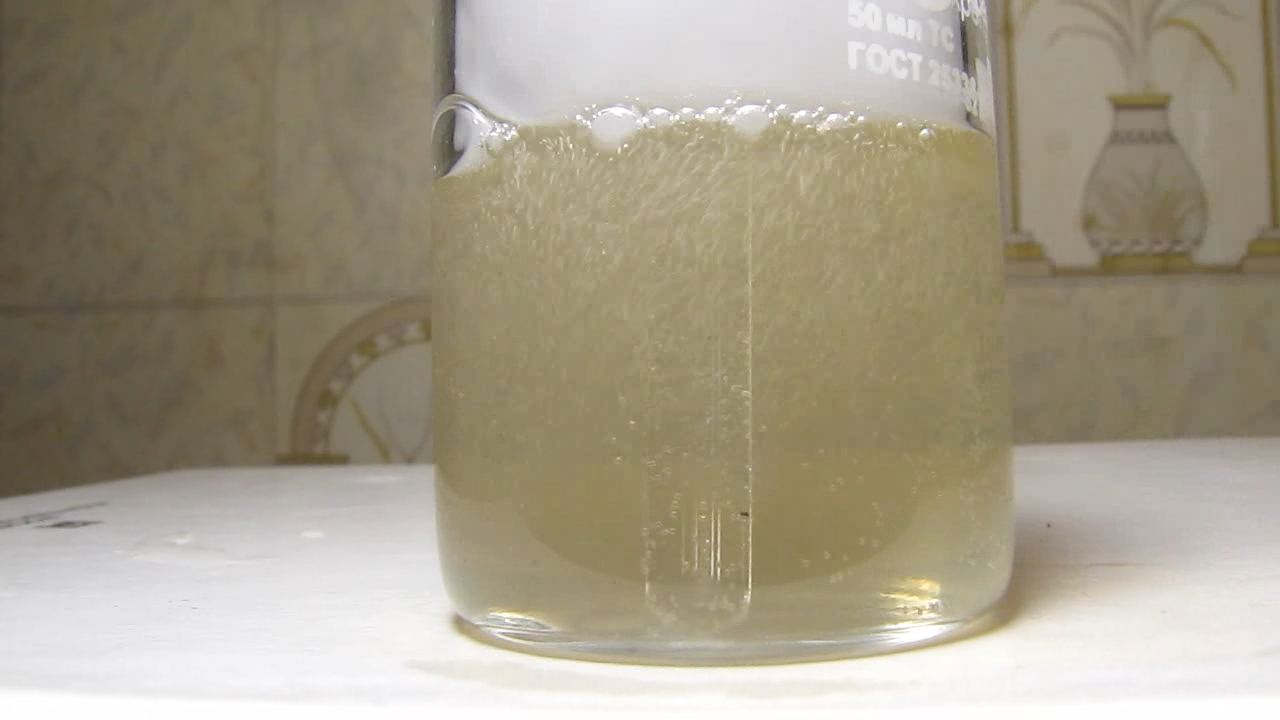
|
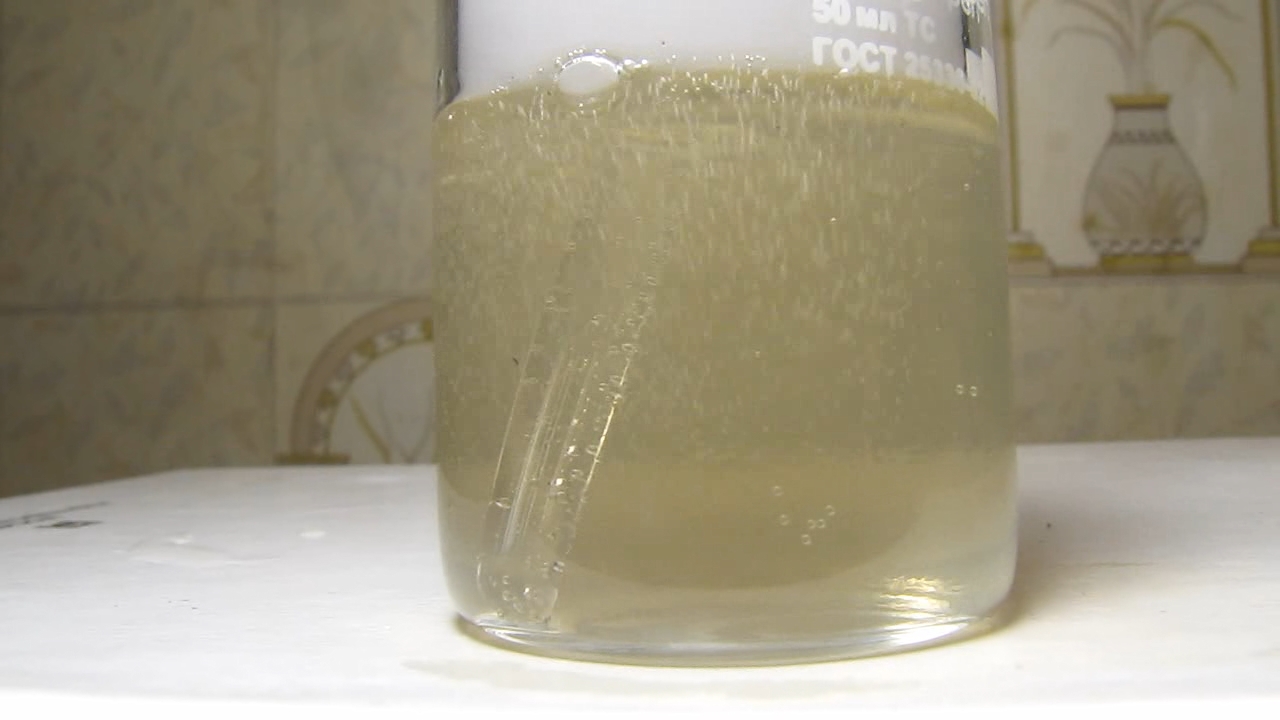
|
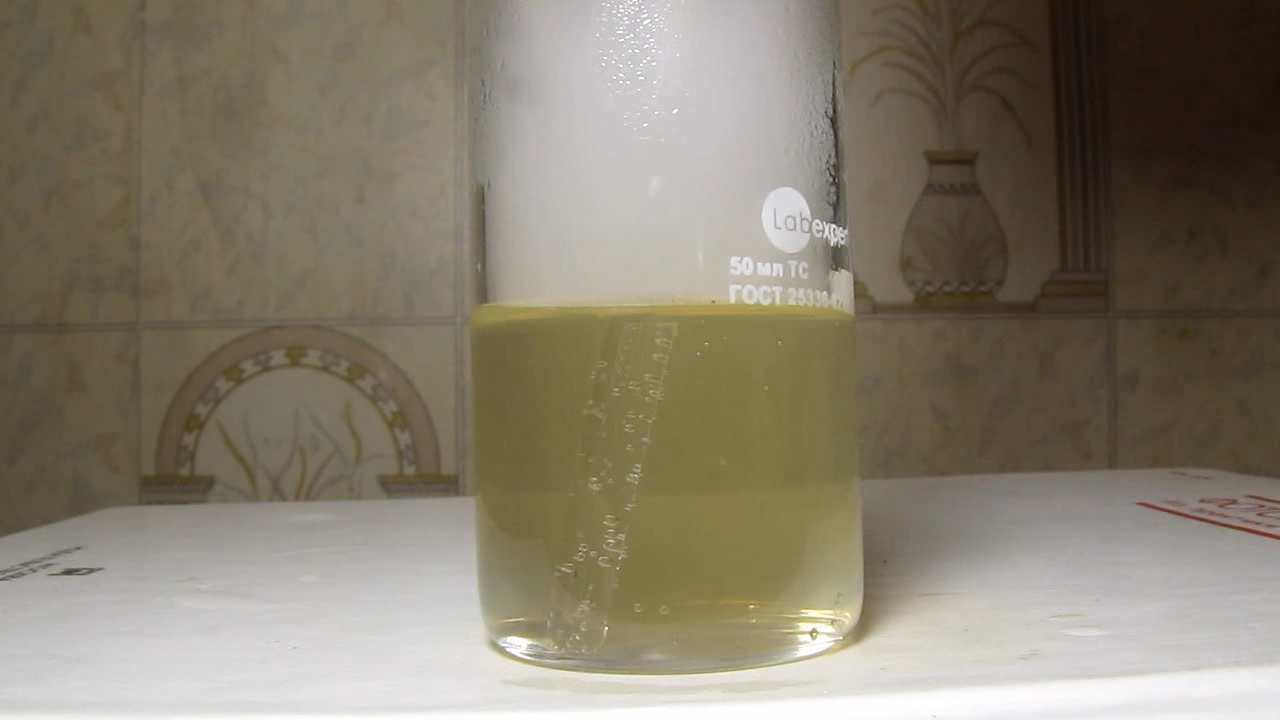
|
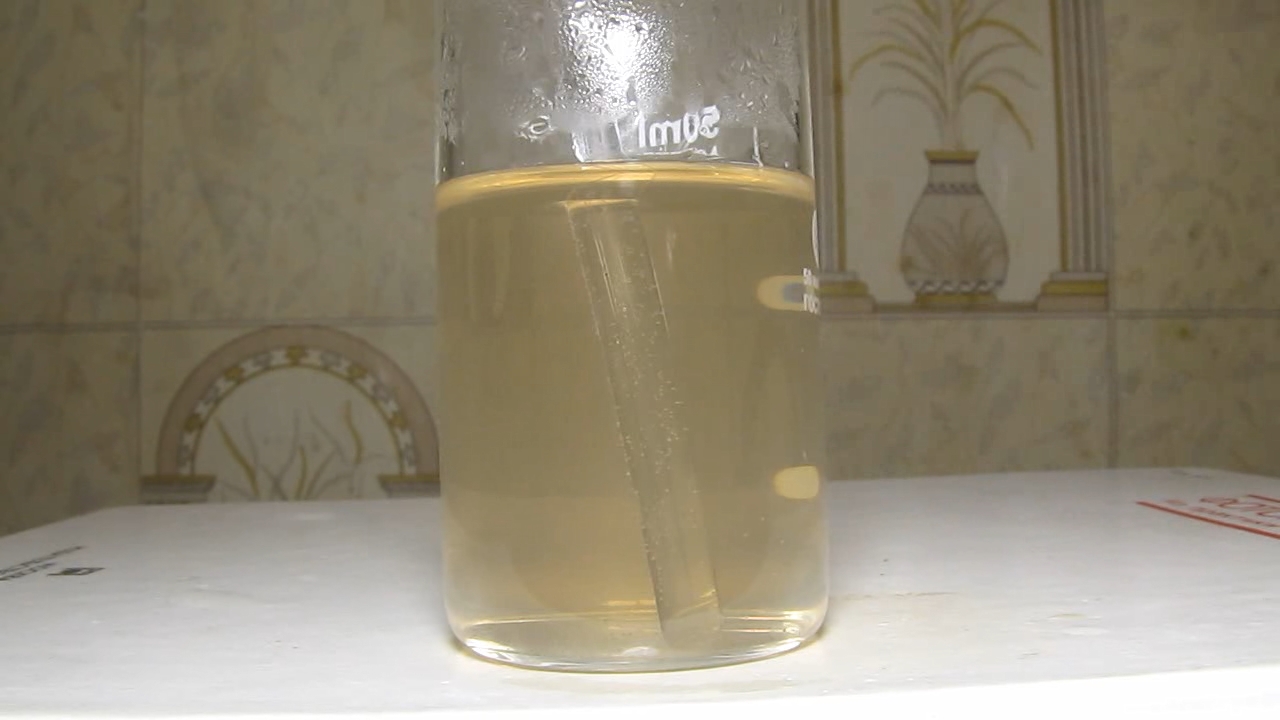
|
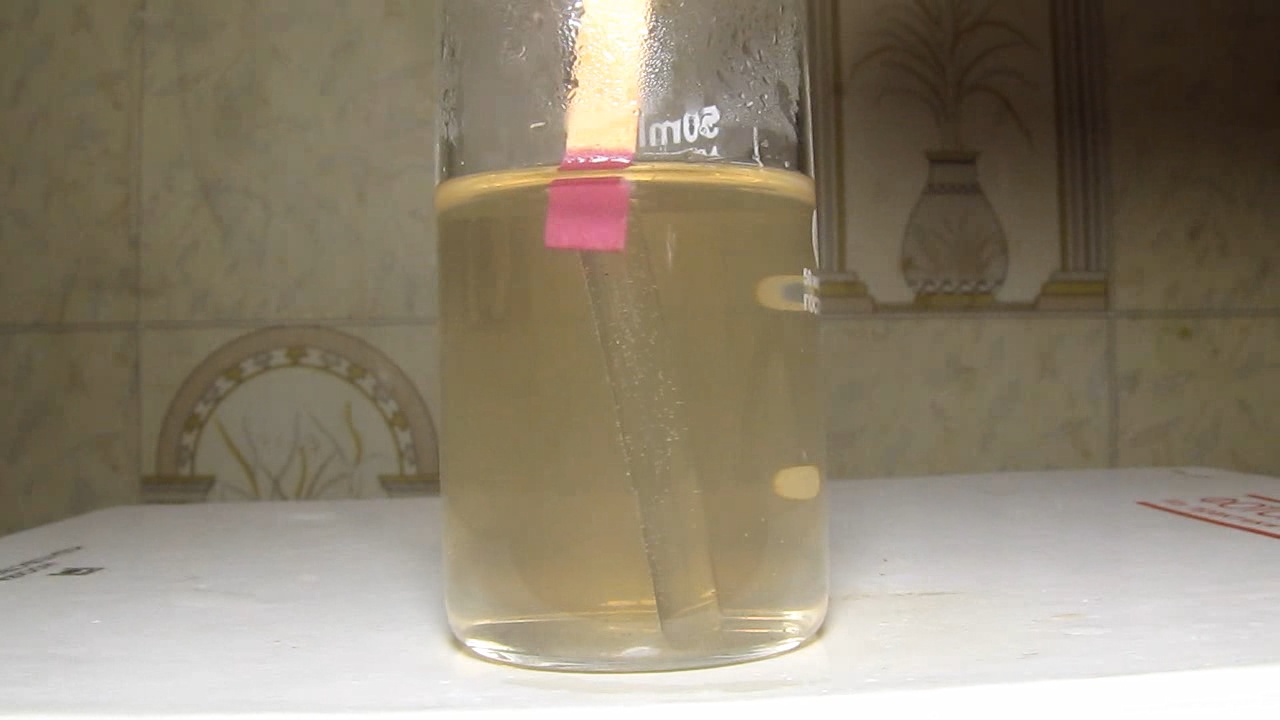
|
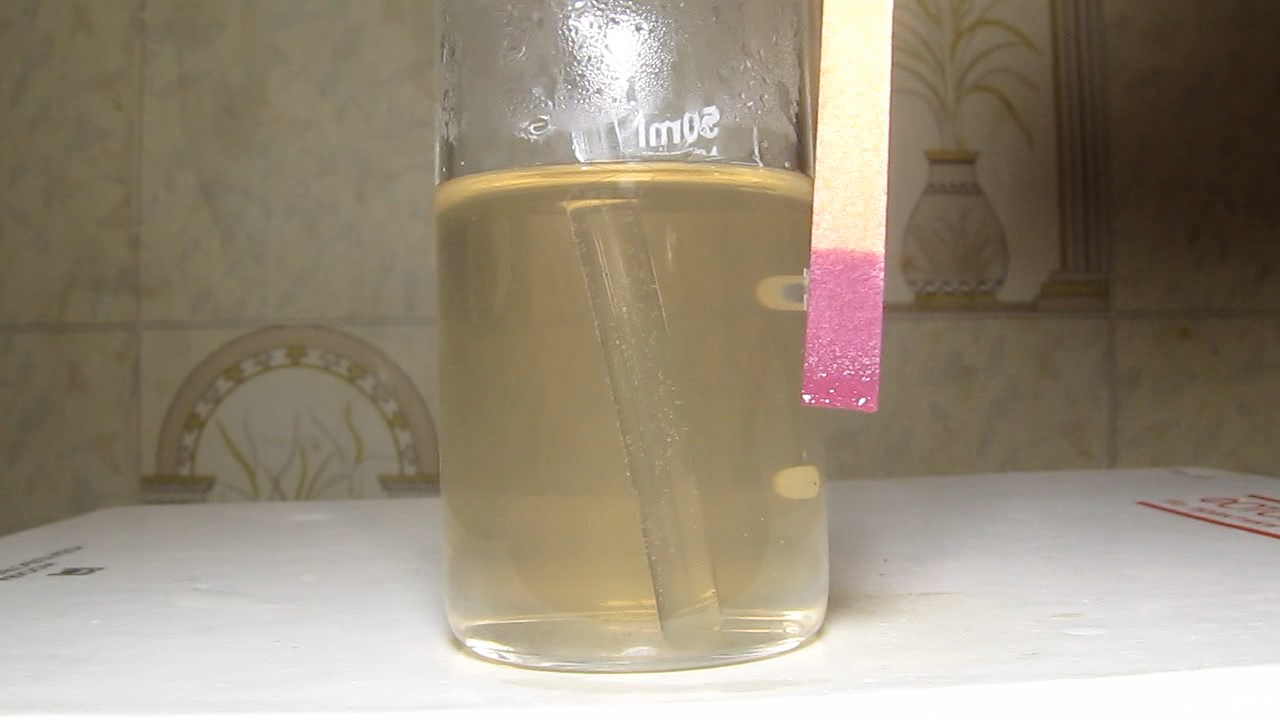
|
|
Несколько лет назад в наших парках и садах появились кусты (или небольшие деревья) с крупными, красивыми цветами. Окраска цветов отличалась, а форма была схожей. Интересно... Что это за растение? Сфотографировал и выложил на форуме химиков. Коллега подсказал, что перед нами - Hibiscus Syriacus / Гібіск Сирійський / Гибискус Сирийский.
Родина растения - Азия (как можно догадаться из названия). Растет в Китае, Корее и странах Западной Азии. Неприхотливое растение с высокой устойчивостью к жаре, засухе, бедным грунтам и загрязнению воздуха (что идеально для городов). Цветы Hibiscus Syriacus могут быть разными: цвет лепестков варьирует от белых до ярко-красных в зависимости от сорта. Форма цветка также может отличаться от привычной (селекцию никто не отменял). Благодаря красивым цветам Hibiscus Syriacus выращивают в качестве декоративного растения далеко за пределами природного ареала. В частности, на открытом грунте (не в теплице) его стали культивировать на юге Украины и в Молдове. Интересно то, что я увидел Hibiscus Syriacus в г. Киев, а это уже север Украины. Даже без обращения к литературе можно догадаться, что южное растения вряд ли будет устойчивым к морозам, но климат меняется - зимы становятся теплее. Показанное на фотографиях ниже деревце растет уже несколько лет и на зиму его никто не укрывал. Разница между фотографиями - 2 года. |
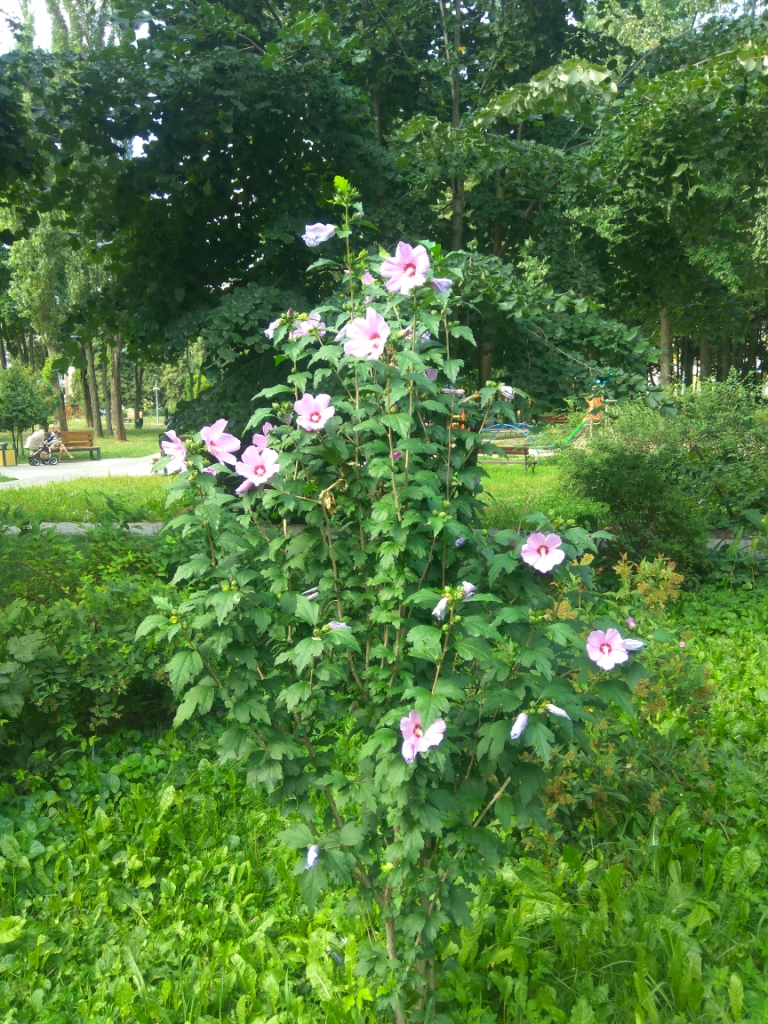
Hibiscus Syriacus - 2021 |
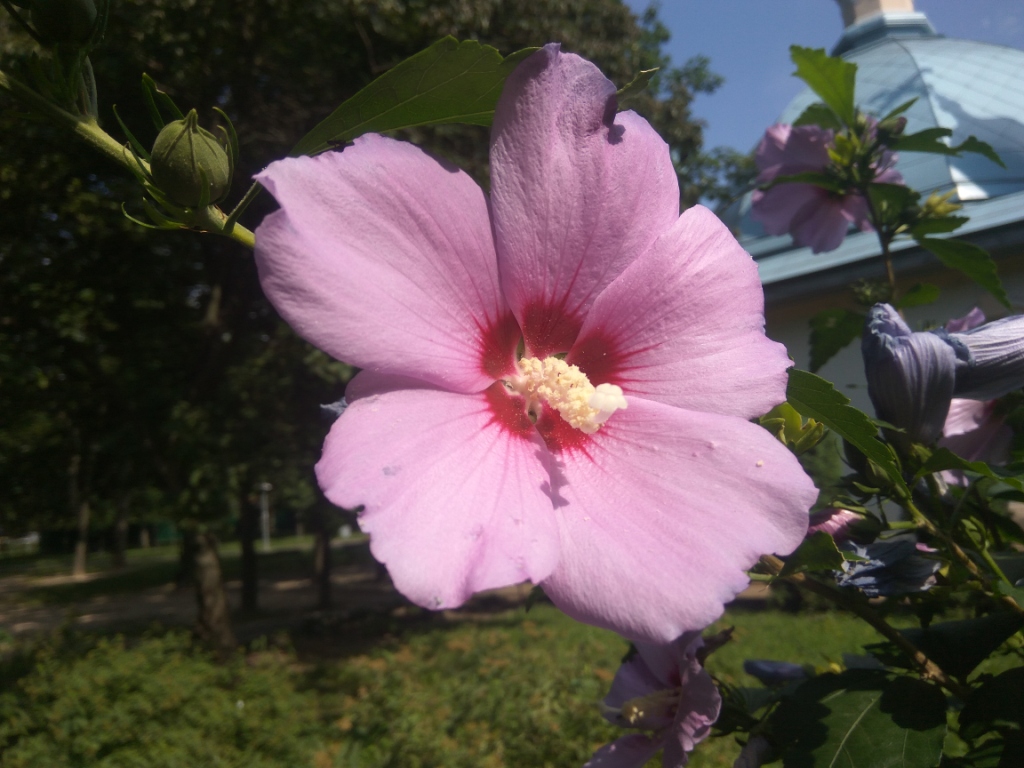
|

|
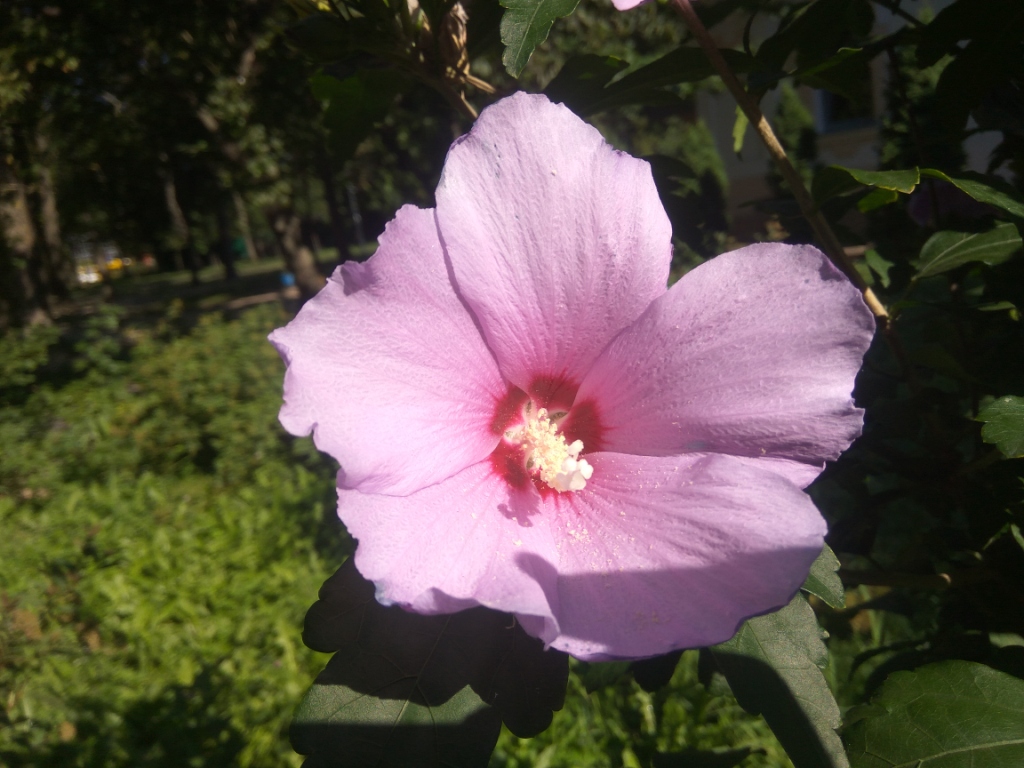
|
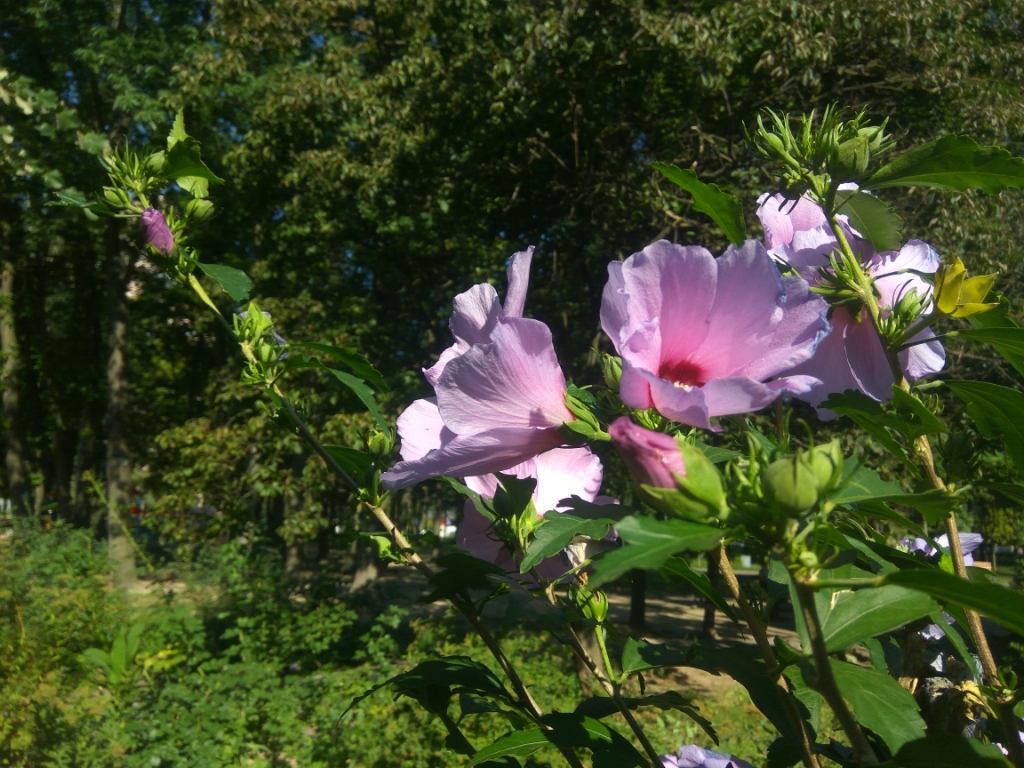
|

|
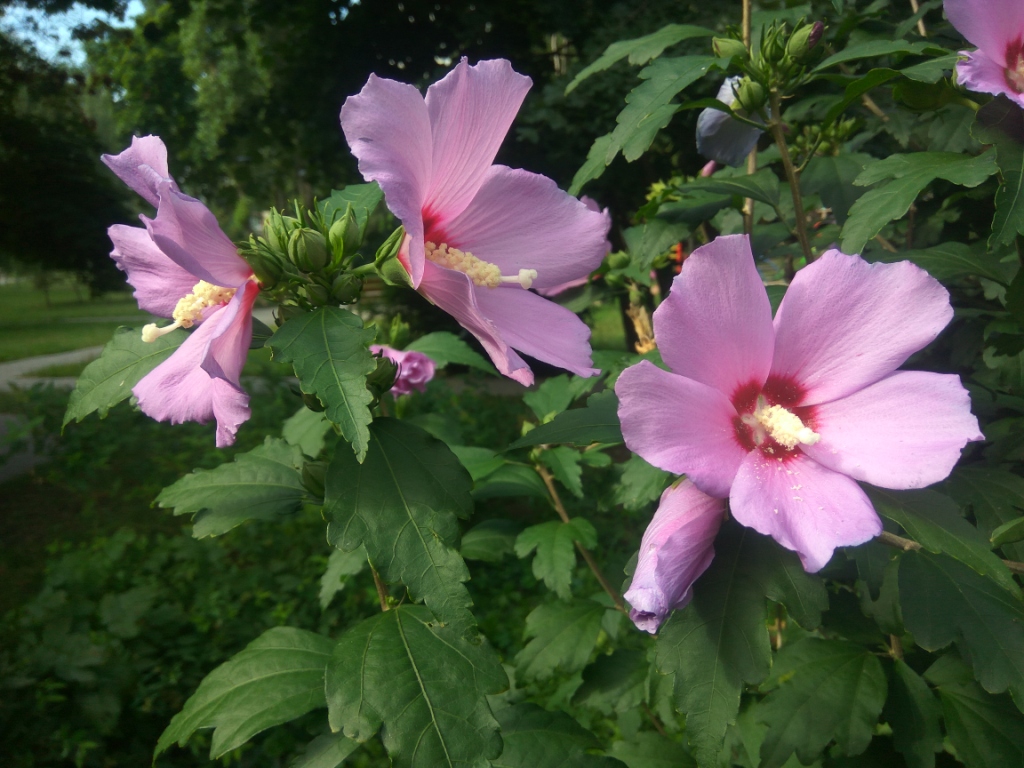
|
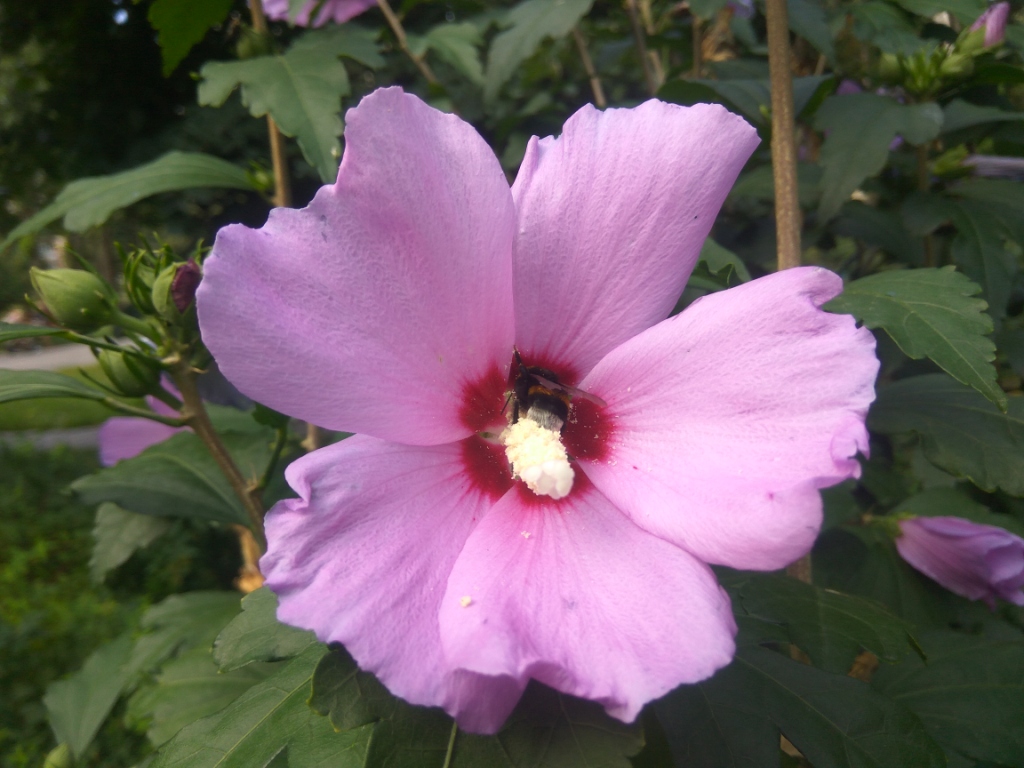
|
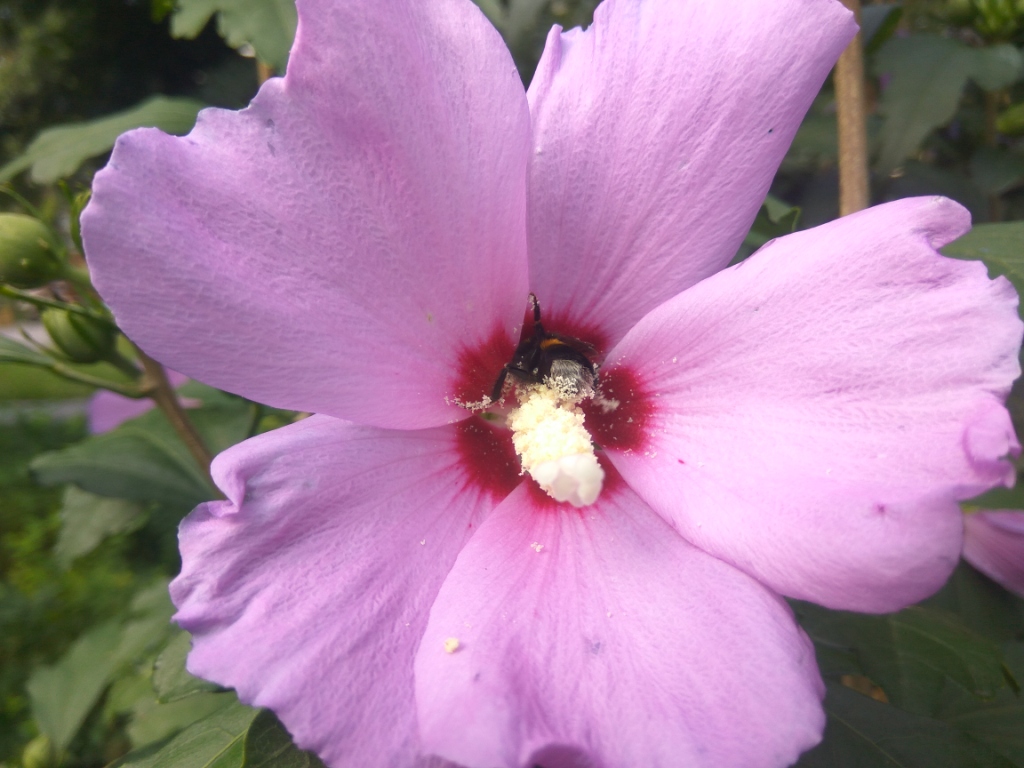
|
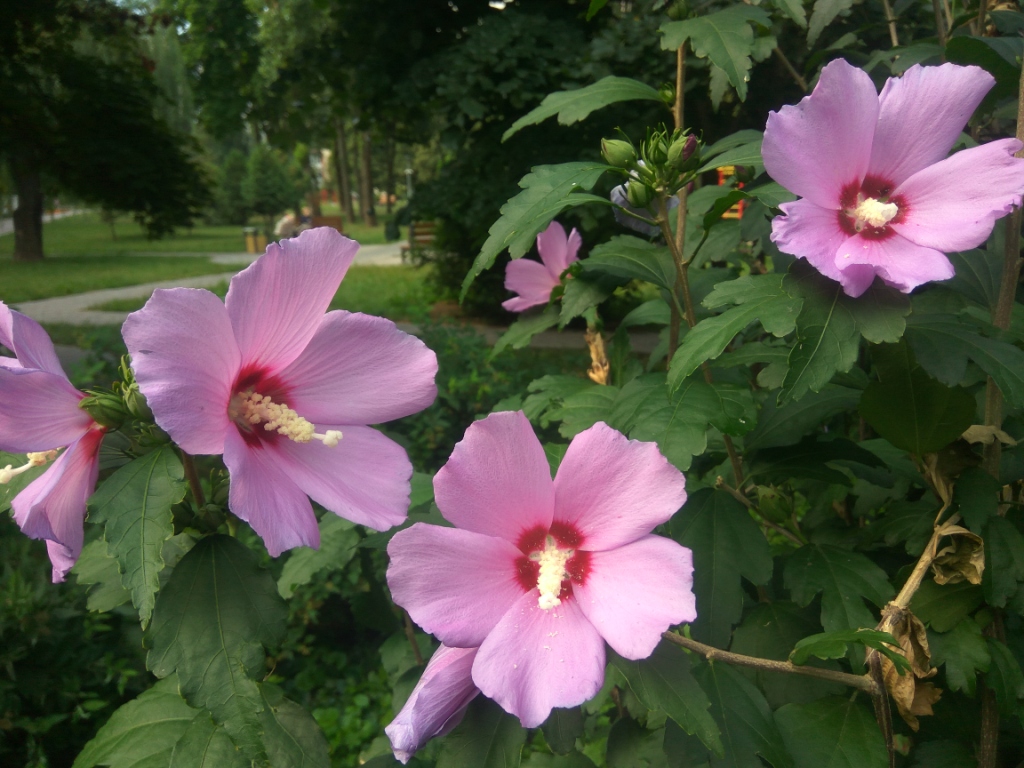
|

|
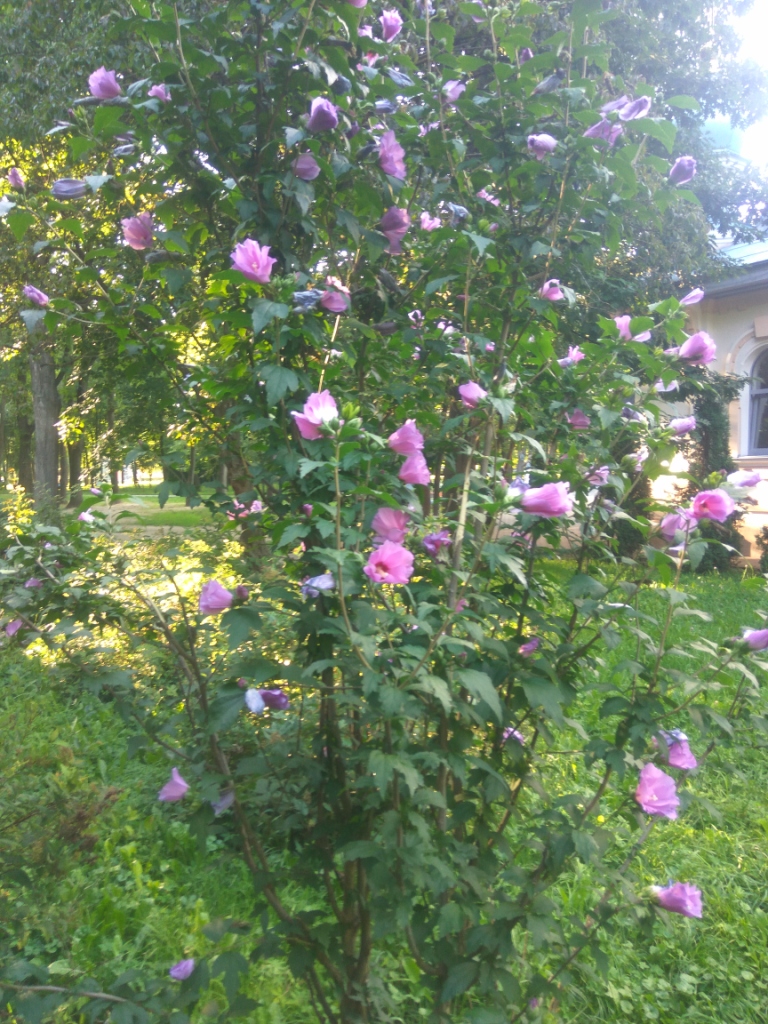
Hibiscus Syriacus - 2023 |
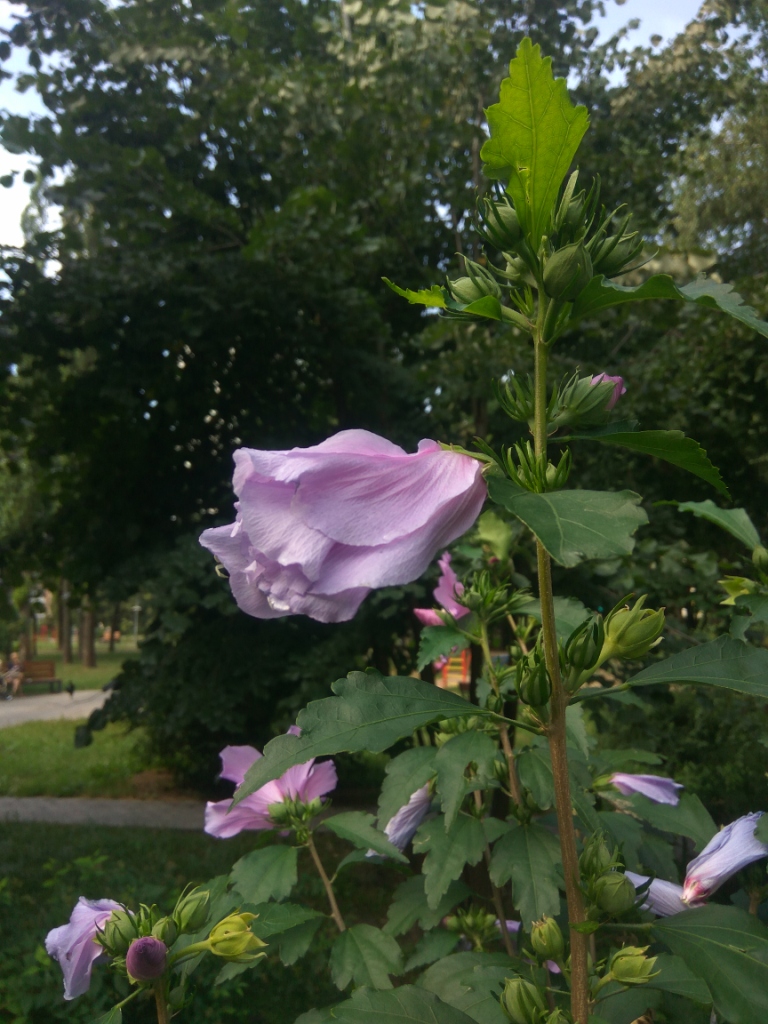
|
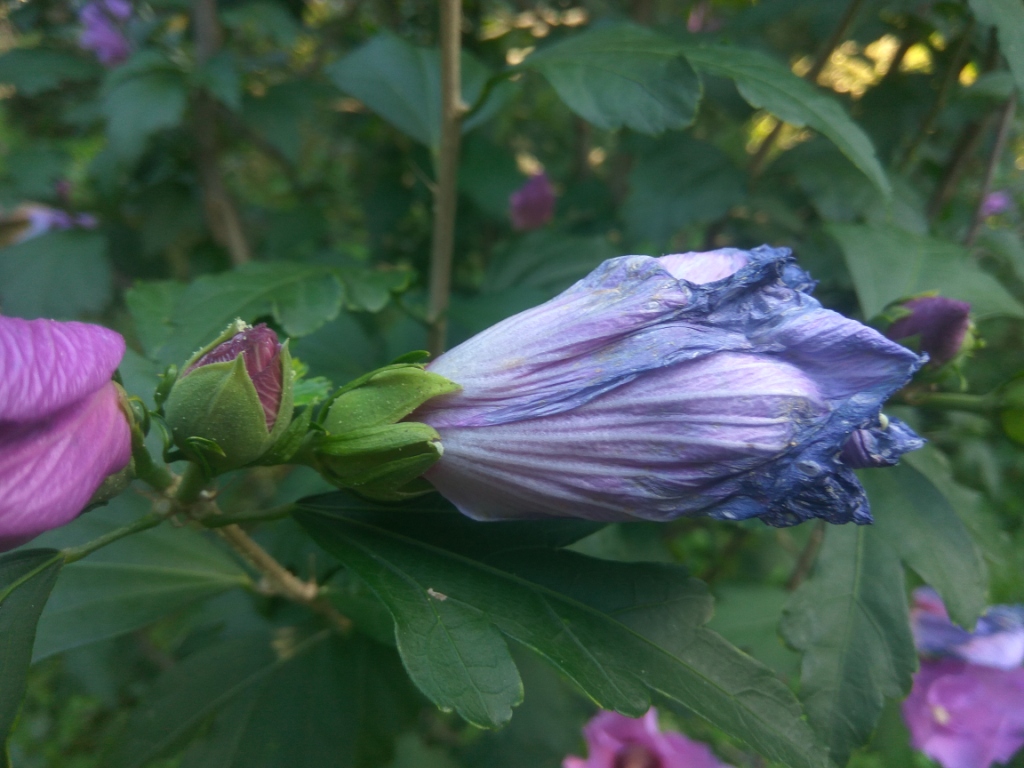
|
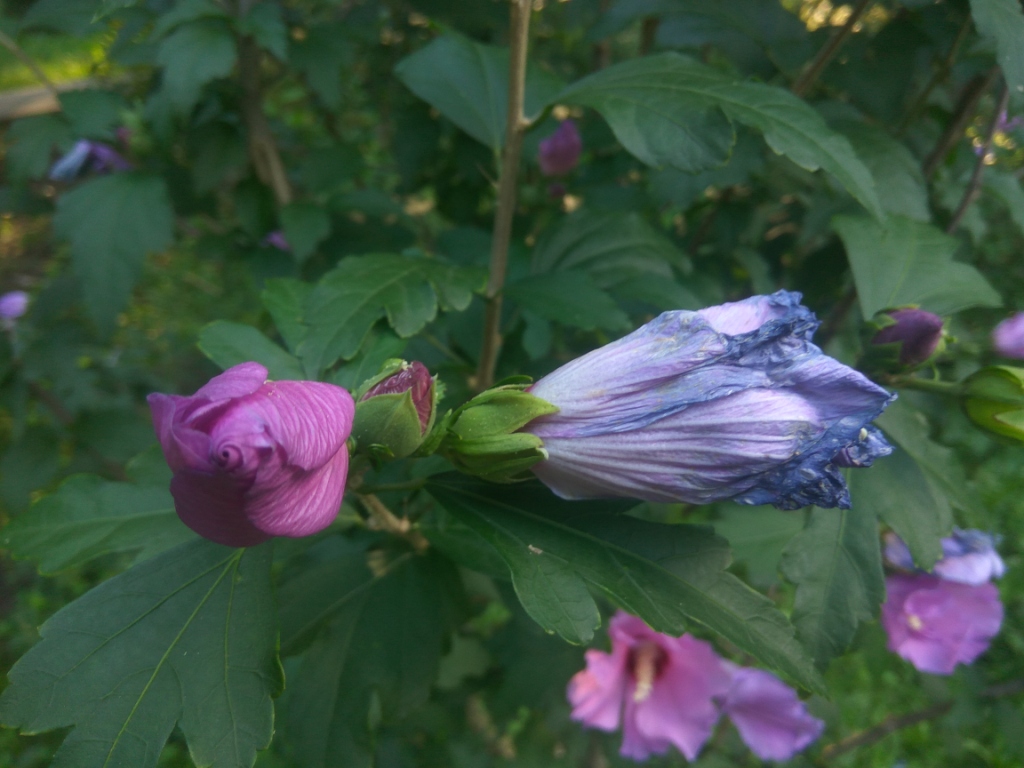
|
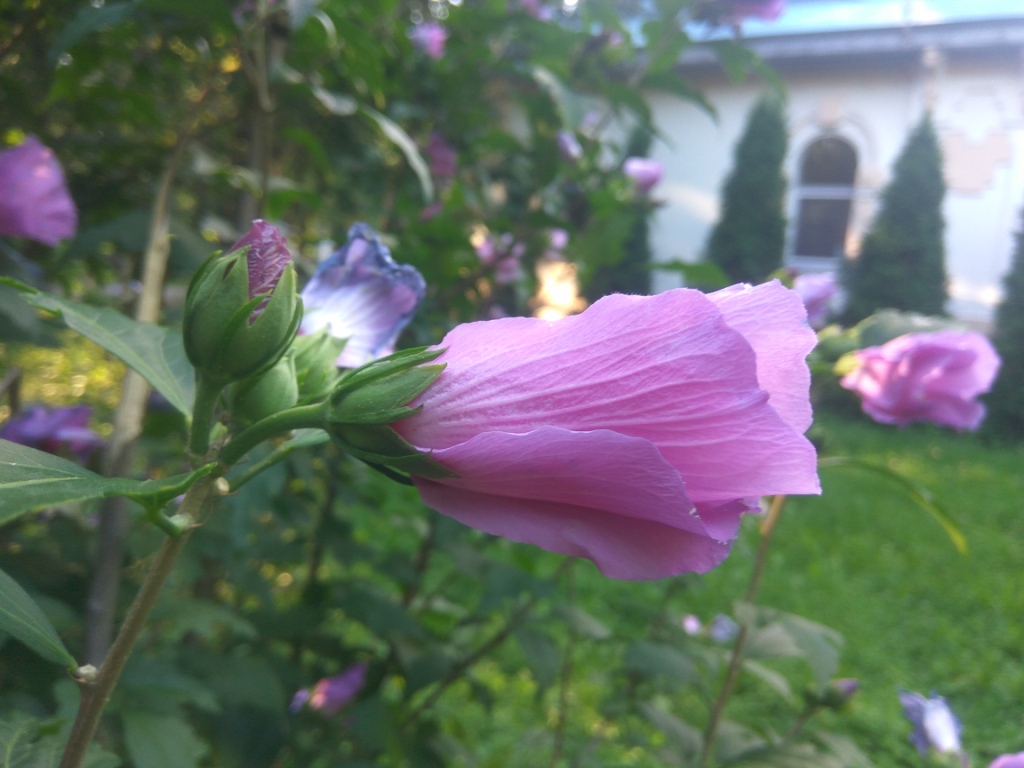
|
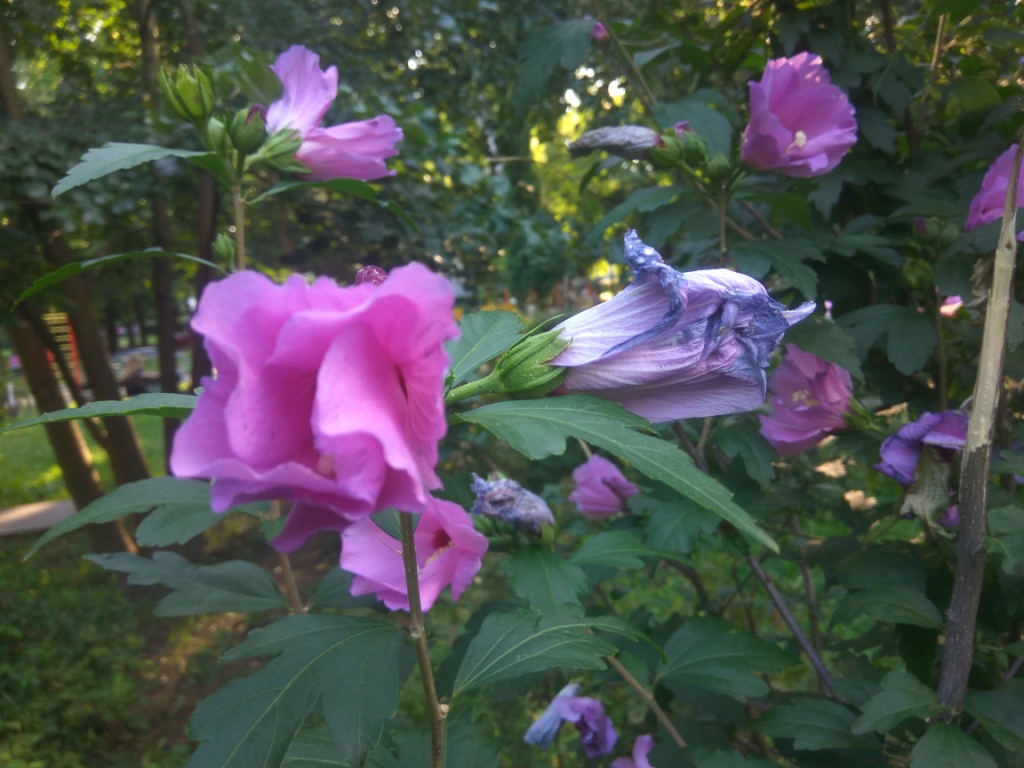
|

|
|
By the way, I noticed that the plant Hibiscus Syriacus belongs to the family Malvaceae. We have been growing its relatives for many years: Malvas are the traditional flowers of our flower beds and gardens.
|
|
Кстати, обратил внимание, что растение Hibiscus Syriacus / Гібіск Сирійський / Гибискус Сирийский принадлежит к семейству Malvaceae / Мальвові / Мальвовые. У нас много лет выращивают его родственников: Malvas / Мальви (Калачики) / Мальвы - традиционные цветы наших клумб и садов:
|
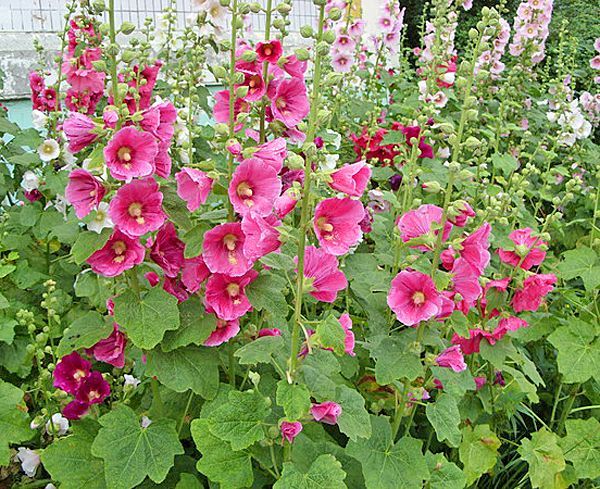
Malvas / Мальви (Калачики) / Мальвы |

|
|
The flowers on the Hibiscus Syriacus tree were pink, but in the initial stage of blooming they had a blue tint. So, a change in the colour of the pigment(s) of the petals during their development (blue - pink) was also observed. It is logical to assume that the point is not in the synthesis of new pigments, but in the fact that when the flowers of Hibiscus Syriacus bloom, the pH of plant tissues changes, which causes changes in the colour of the pigment (which already exists). This phenomenon has been described in the previous sections of our article for different plants.
In other words, as the pH changes, Hibiscus Syriacus flowers will definitely change colour, so they are suitable for our experiments. Let's try ammonia first. How may the colour change? I think the pink flower will turn green. Why? A colleague has already experimented with hibiscus tea - after adding of sodium hydroxide, the tea turned yellow-green (the original colour of the tea is red). The fact is that hibiscus tea is made from hibiscus flowers. At first, I thought it was Hibiscus Rosa-sinensis, which we grow in flowerpots. Its local name is "Chinese Rose" - the bright red flowers of this plant really can resemble a rose (especially if the flowers are terry - there are such). |
|
Цветы на деревце Hibiscus Syriacus были розовыми, но в начальной стадии распускания - имели синий оттенок. Т.е. для данного растения также наблюдалось изменение цвета пигмента(ов) лепестков в процессе их развития (синий - розовый). Логично предположить, что дело не в синтезе новых пигментов, а в том, что при распускании цветов Hibiscus Syriacus меняется рН растительных тканей, что вызывает изменения цвета уже существующего пигмента. Данное явление было уже неоднократно описано в предыдущих разделах нашей статьи для разных растений.
Другими словами, при изменении рН цветы Hibiscus Syriacus определенно будут менять цвет, поэтому для наших экспериментов они подходят. Для начала - аммиак. Как должен измениться цвет? Думаю, что розовый цветок станет зеленым. Почему? Коллега уже провел эксперимент с чаем каркаде (Hibiscus tea) - под действием едкого натра чай стал желто-зеленым (первоначальный цвет чая - красный). Дело в том, что чай каркаде делают из цветов гибискуса. Сначала я ошибочно подумал, что это - Hibiscus rosa-sinensis / Гібіск китайська рожа / Гибискус китайский, который у нас выращивают в вазонах. Другое его название - Китайская Роза: действительно ярко-красные цветы этого растения могут напоминать розу (особенно, если цветок махровый - бывают и такие). |

Hibiscus Rosa-sinensis / Гібіск китайська рожа / Гибискус китайский |
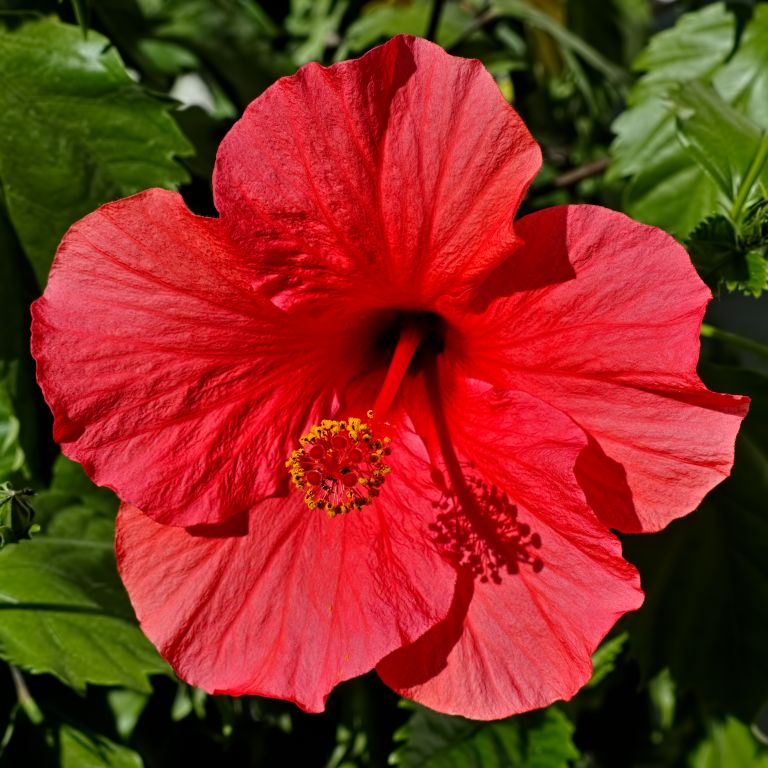
|
|
I was wrong, hibiscus tea is made from petals of another species of hibiscus - Hibiscus sabdariffa (Roselle).
|
|
Посмотрел - нет, чай каркаде делают из лепестков другого вида гибискуса - Hibiscus sabdariffa (Roselle).
|

Hibiscus tea / Чай каркаде |

Hibiscus sabdariffa / Roselle plant |
|
In any case, this plant is a relative of Hibiscus Syriacus, so the forecast remains valid: in an ammonia atmosphere, the flowers of Hibiscus Syriacus will turn green.
The flower of Hibiscus Syriacus was hung in a 350 ml glass. A concentrated solution of ammonia was carefully added to the bottom with a pipette (so that the flower did not touch the liquid) - as a result, the flower was into an atmosphere of ammonia vapor. Soon, green spots began to appear on the surface of the flower, which all expanded. There was practically no transitional colour from pink to green: in places where ammonia had already penetrated, the pH of the tissues became strongly alkaline, and the colour of the pigment became green. In places, where the diffusion of ammonia has not yet reached the goal, the colour still remains pink. To speed up this process, I watered the pink areas with an ammonia solution; it was clearly seen that the surface was hydrophobic and poorly wetted: the flower was protected by a hydrophobic film of wax. When the colour transition was almost over, the green flower was transferred to another glass; glacial acetic acid was added to the bottom. The petals gradually began to turn pink, starting from the edges. To speed up the process, I began to rub the flower against the walls of the glass, moistened with the acid. As a result, the flower turned pink again. The acetic acid also turned pink. I added a little more acid to the glass and rubbed the petals with a glass rod - so that the dye went into the solution. The resulting pink solution resembled a solution of potassium permanganate. This solution was poured into another glass. A concentrated solution of ammonia was added drop by drop to the pink solution, the liquid was stirred. White smoke of ammonium acetate appeared. At first, the colour of the solution was preserved, then the solution became light purple (also reminiscent of permanganate), after which the solution became colourless. After adding of the next portions of ammonia, the solution became a bright green-yellow (lemon). A similar colour change has already been observed in the experiments with some other plants (see the previous parts of the article). |
|
Все равно данное растение - родственник Hibiscus Syriacus, поэтому прогноз остается в силе: в среде аммиака цветы Hibiscus Syriacus / Гибискуса Сирийского станут зелеными.
Подвесил цветок Hibiscus Syriacus / Гибискуса Сирийского в стакане на 350 мл, осторожно пипеткой добавил на дно концентрированный раствор аммиака (так, чтобы цветок не касался жидкости) - в результате цветок погрузился в атмосферу паров аммиака. Вскоре на поверхности цветка стали появляться зеленые пятна, которые все расширялись. Какого-то переходного цвета от розового к зеленому практически не наблюдалось: в местах куда аммиак уже проник, реакция тканей становилась сильнощелочной, а окраска пигмента - зеленой. В местах, где диффузия аммиака еще не достигла цели, окраска пока оставалась розовой. Чтобы ускорить этот процесс, поливал розовые участки раствором аммиака; при этом было четко видно, что поверхность гидрофобная и плохо смачивается: цветок защищен гидрофобной пленкой воска. Когда переход окраски почти закончился, перенес зеленый цветок в другой стакан, добавил на дно ледяную уксусную кислоту. Лепестки постепенно стали приобретать розовый цвет, начиная с краев. Чтобы ускорить процесс стал потирать цветок о стенки стакана, смоченные кислотой. В результате цветок снова стал розовым (при этом он частично закрылся). Кислота также стала розовой. Добавил в стакан еще немного уксусной кислоты и растер лепестки стеклянной палочкой - чтобы краситель перешел в раствор. Полученный розовый раствор напоминал раствор перманганата калия, перелил его в другой стакан. Стал по каплям добавлять концентрированный раствор аммиака, перемешивал. Появился белый дым ацетата аммония. Сначала цвет раствора сохранялся, потом раствор стал светло-фиолетовым (тоже напоминал перманганат), после чего - раствор обесцветился. От следующих порций аммиака раствор стал ярким зелено-желтым (лимонным). Подобное изменение окраски уже несколько раз наблюдалось в экспериментах с другими растениями (см. предыдущие части статьи). |
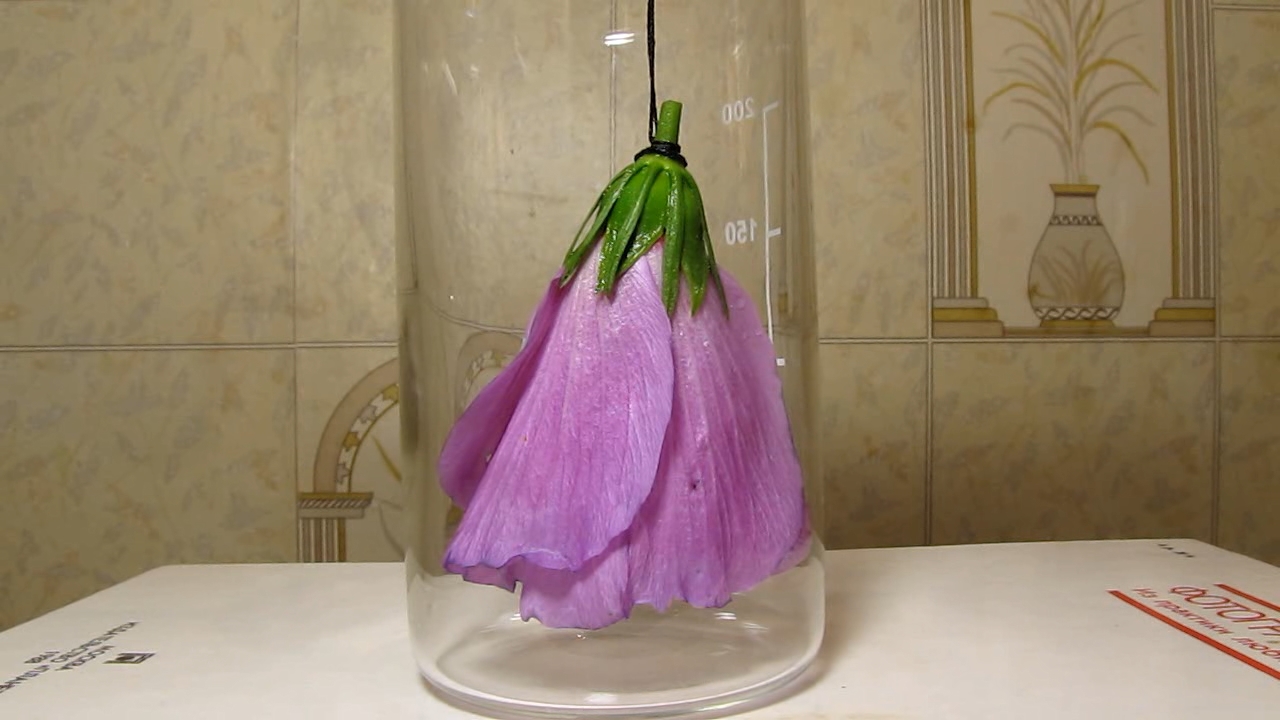
Hibiscus Syriacus flowers, ammonia and acetic acid |
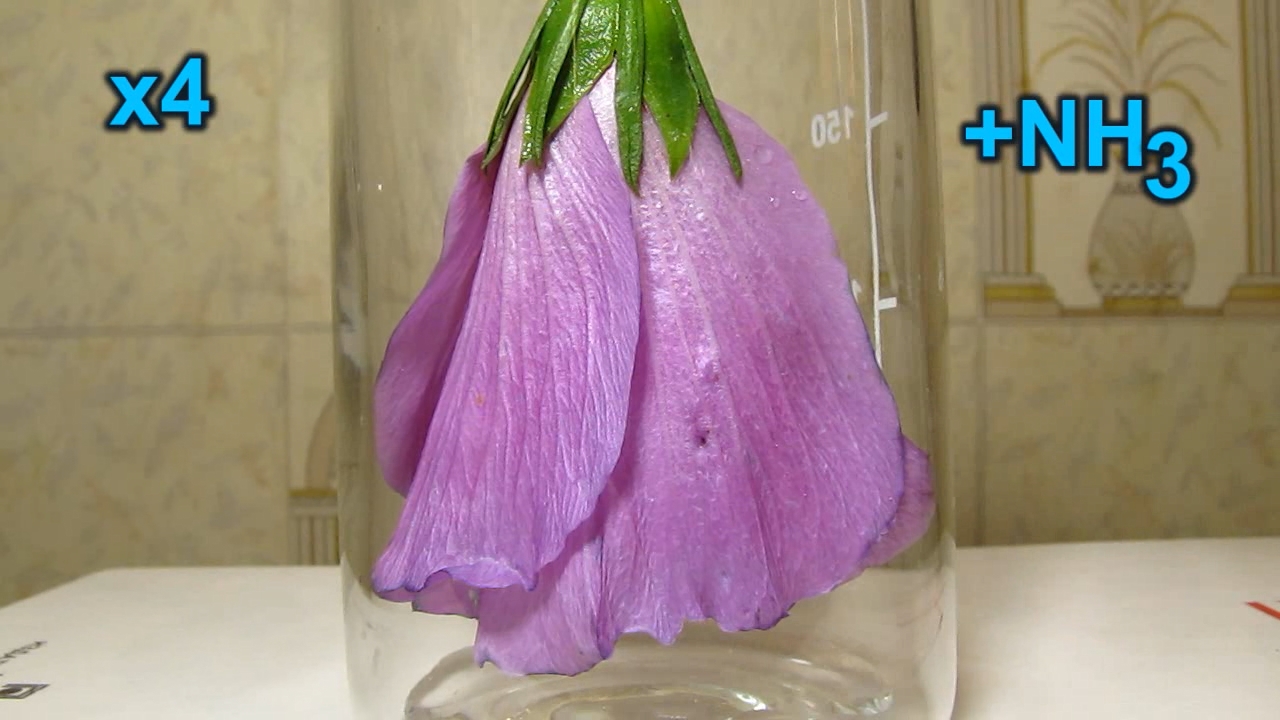
|
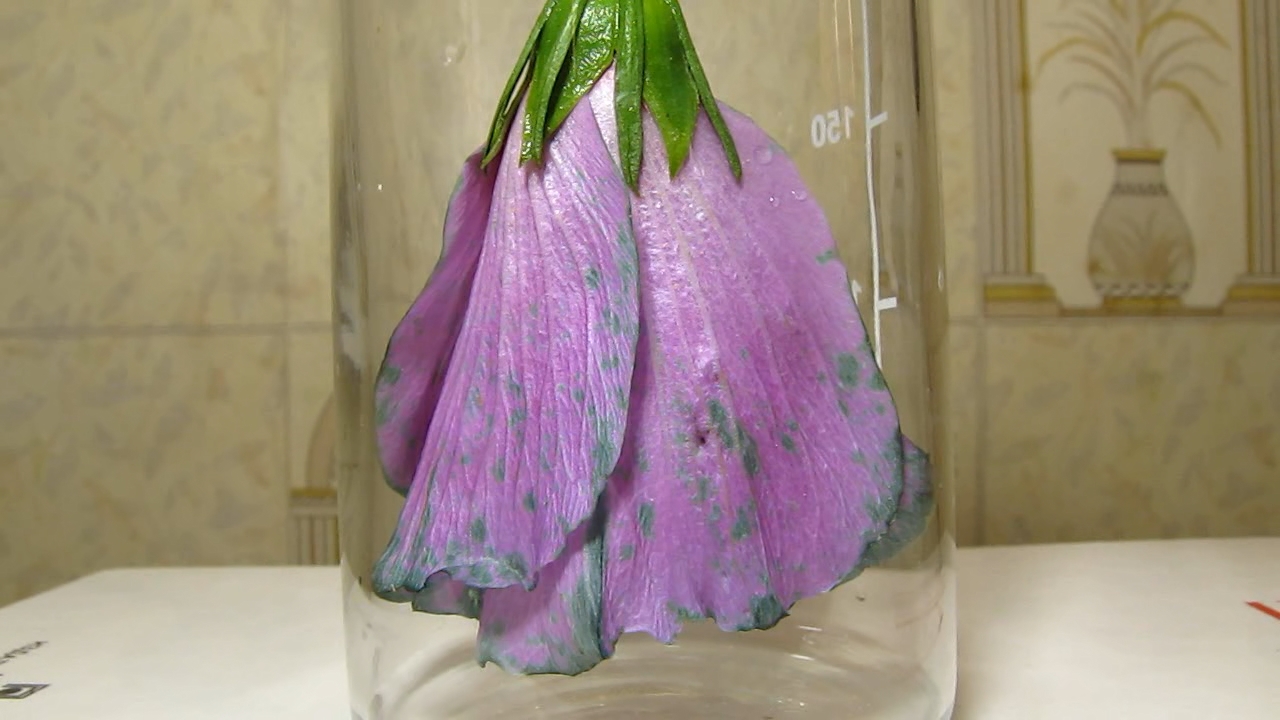
|
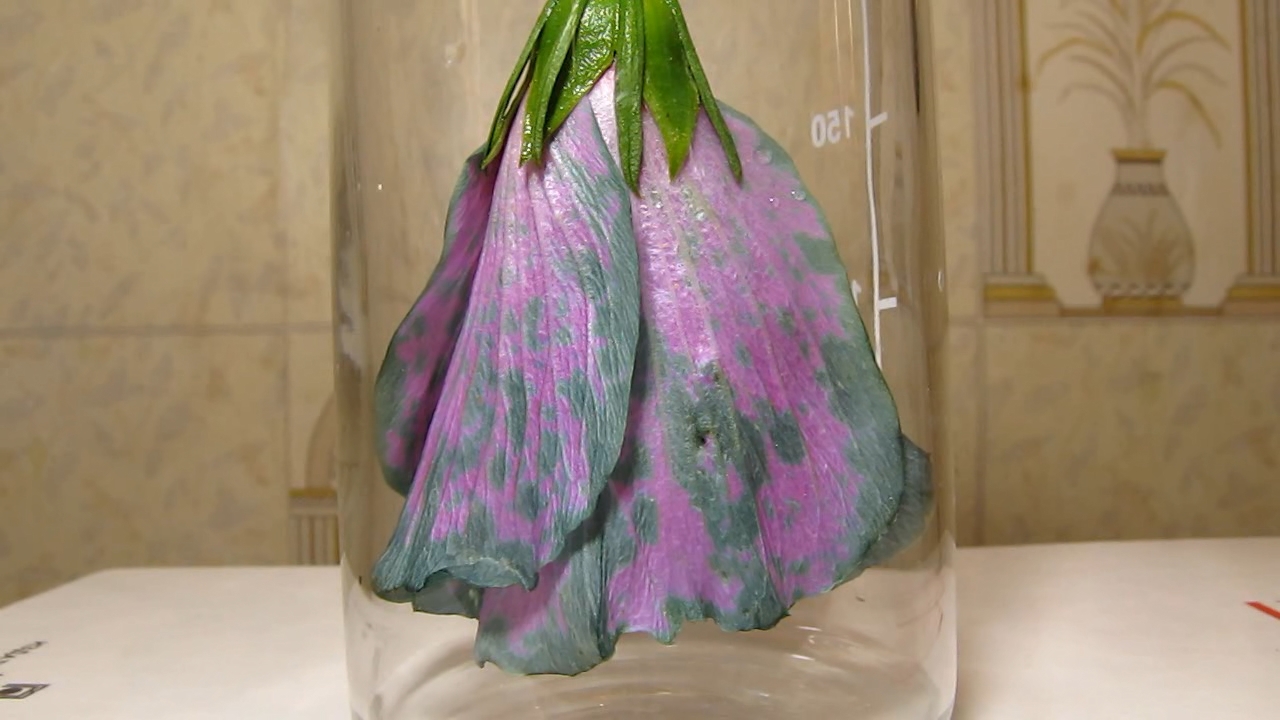
|

|

|
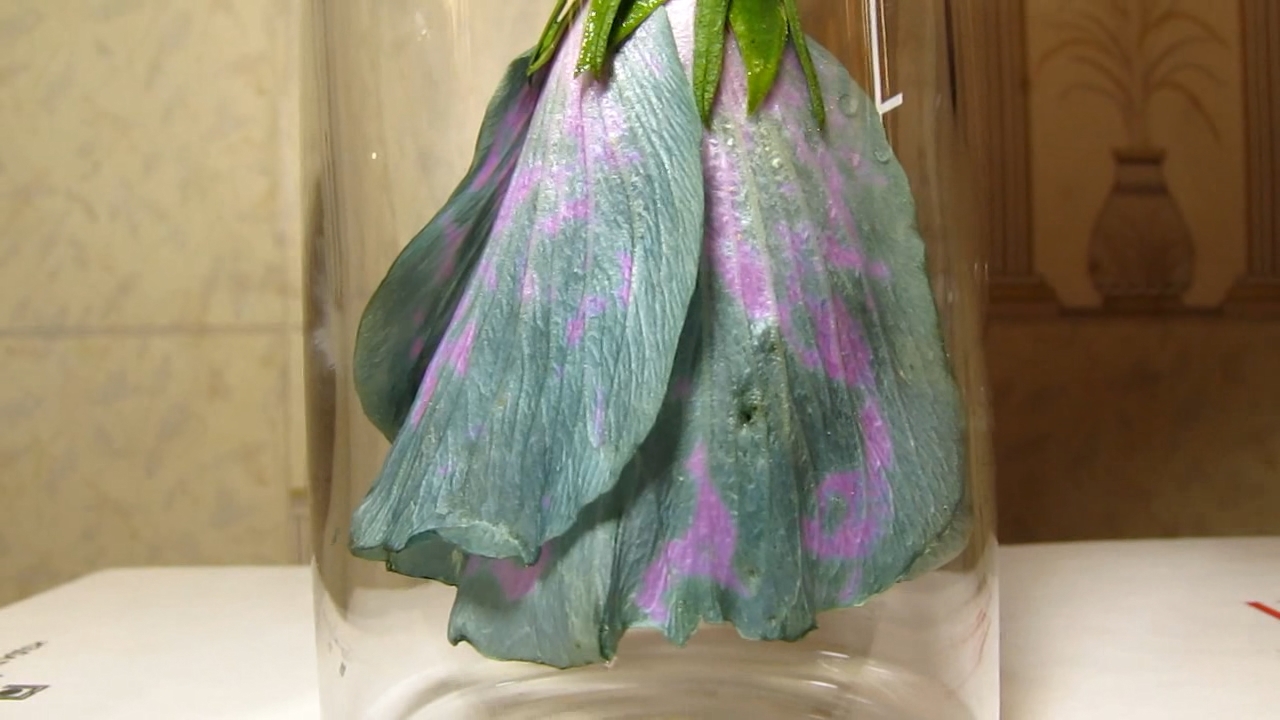
|
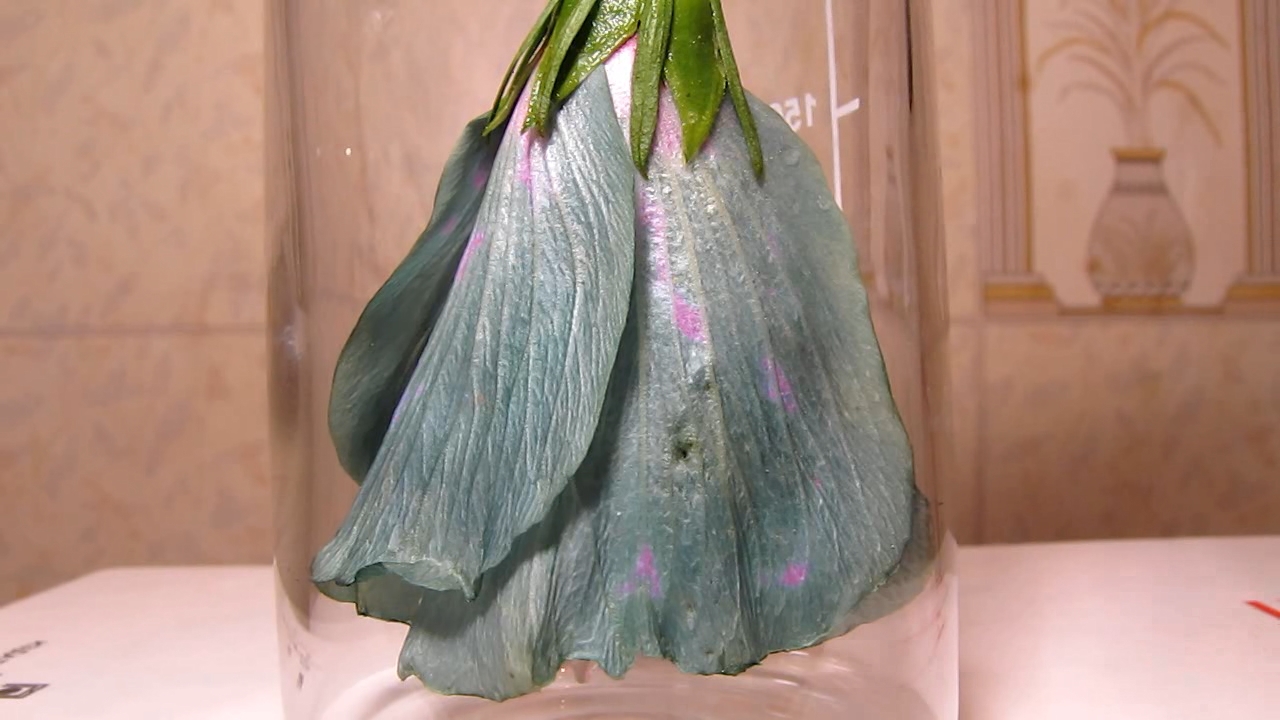
|
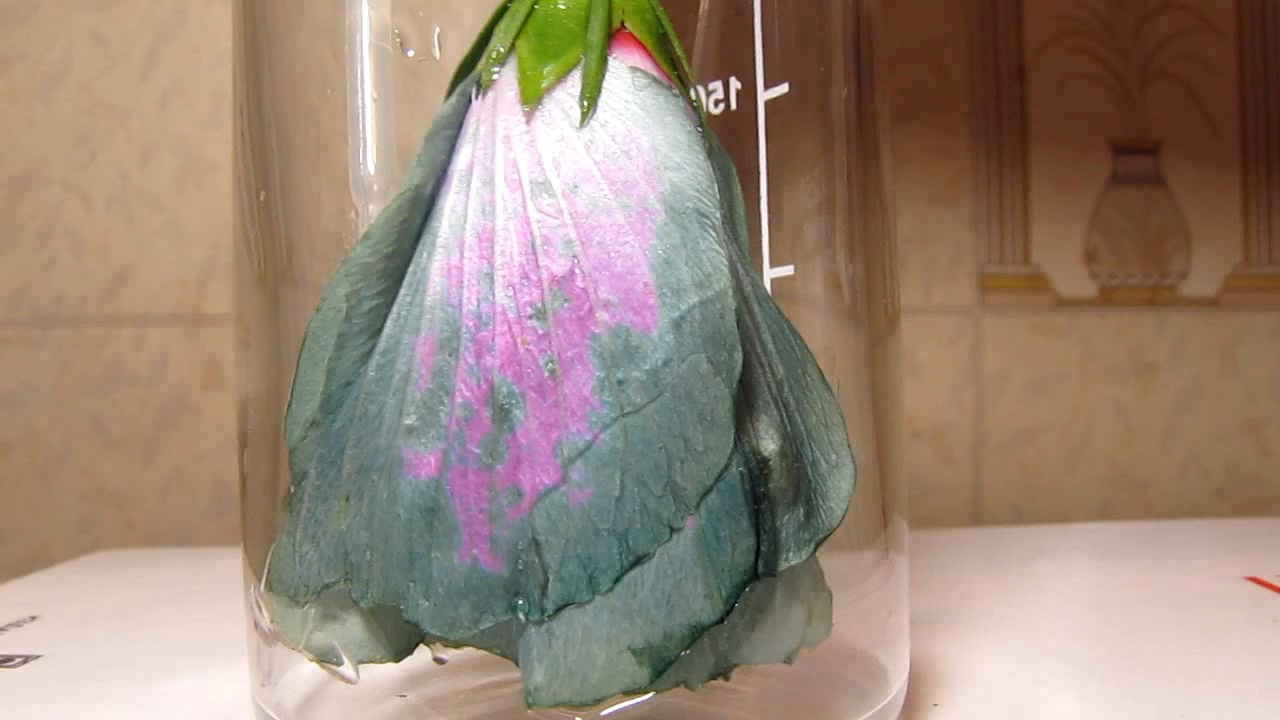
|
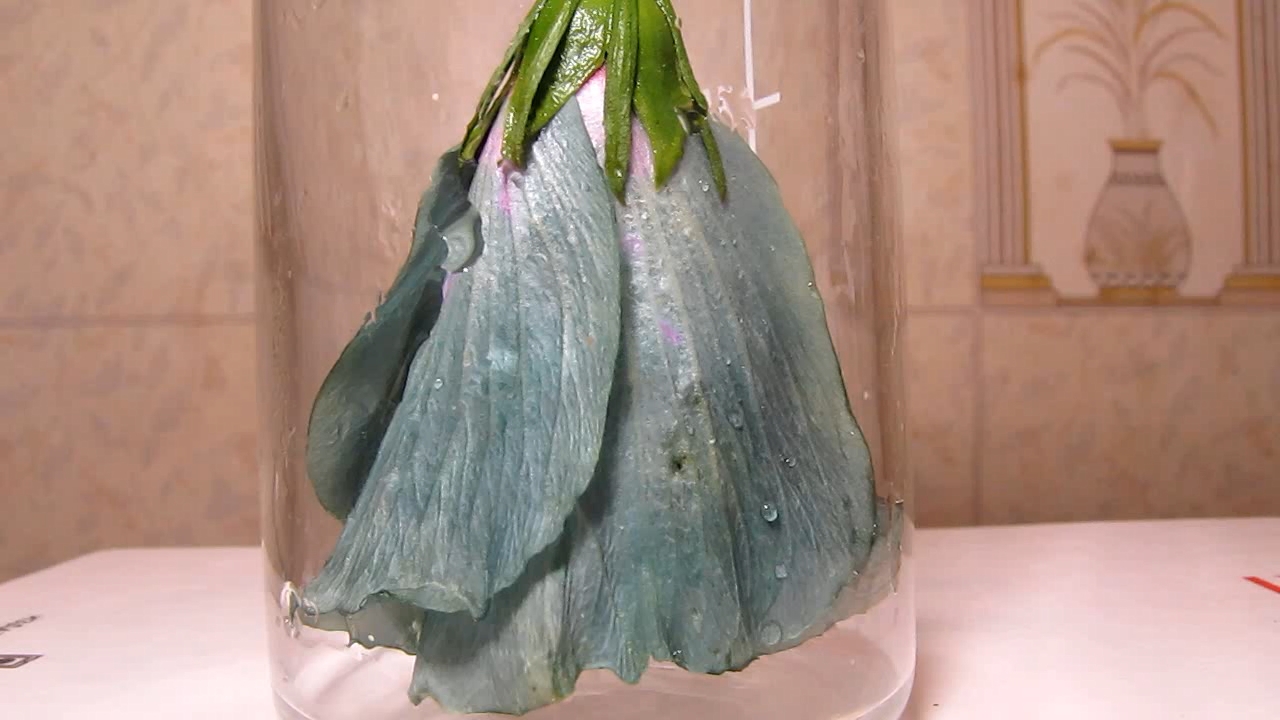
|

|
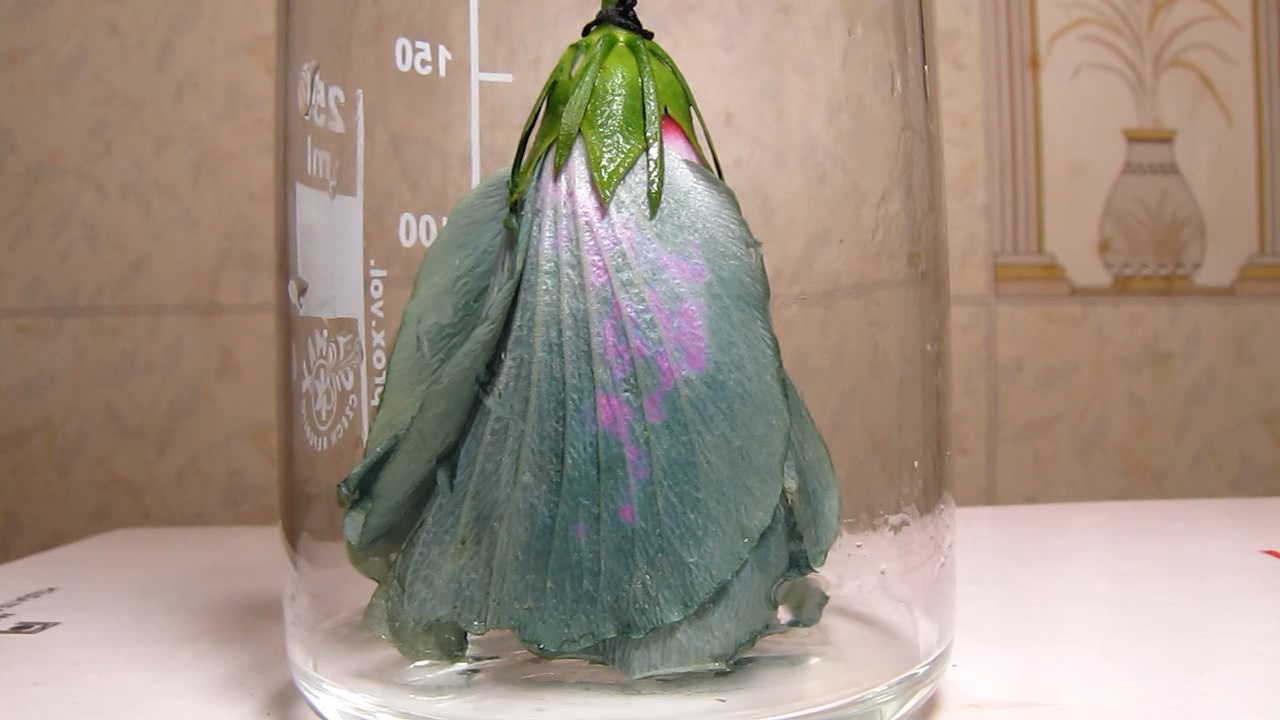
|
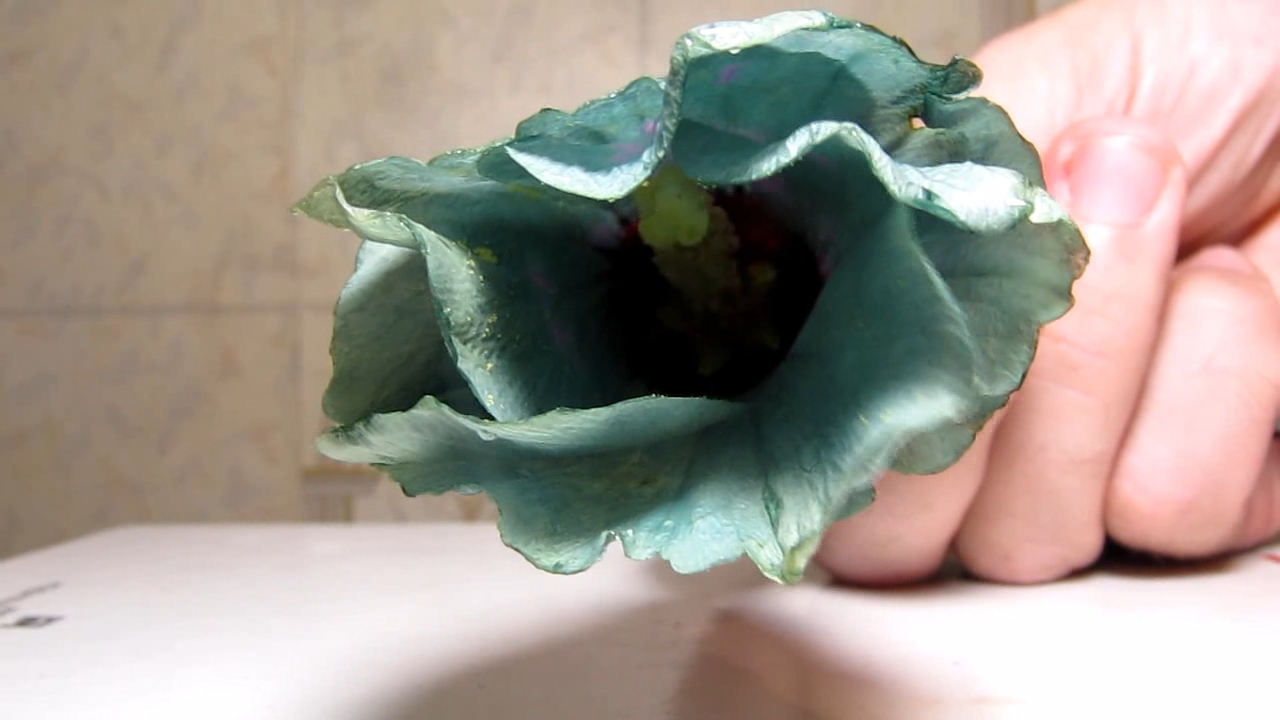
|
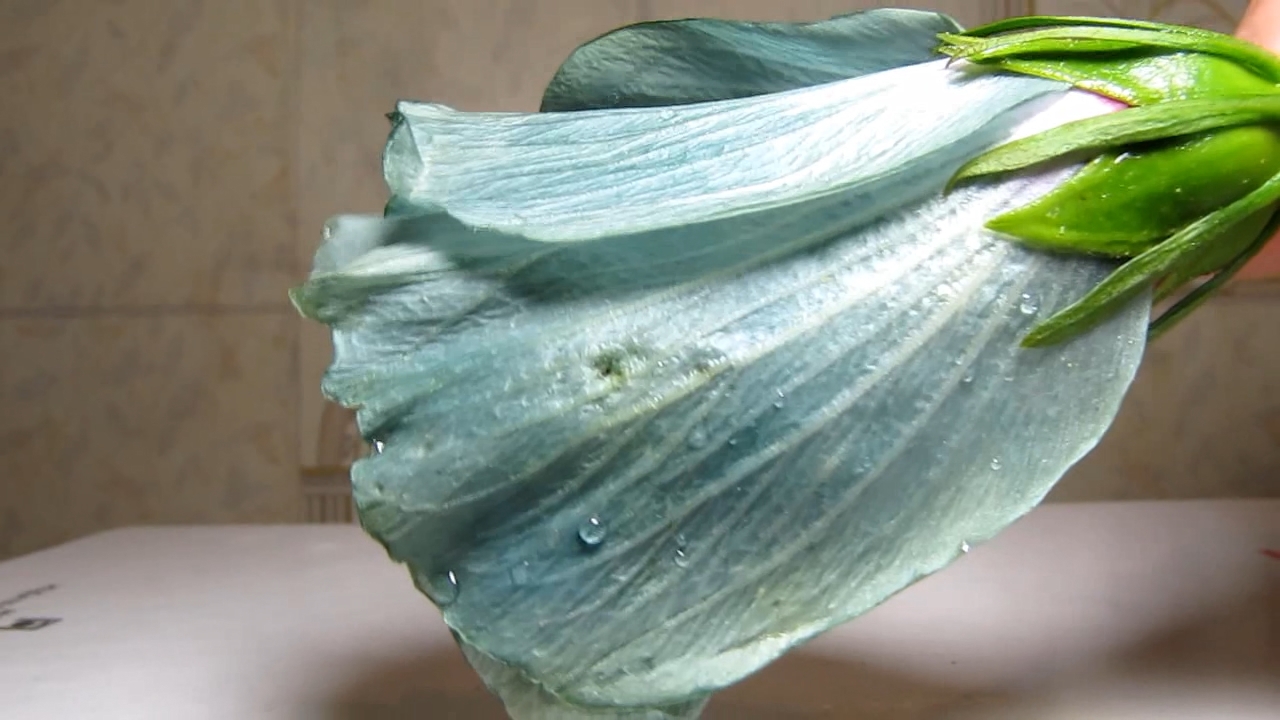
|

|

|
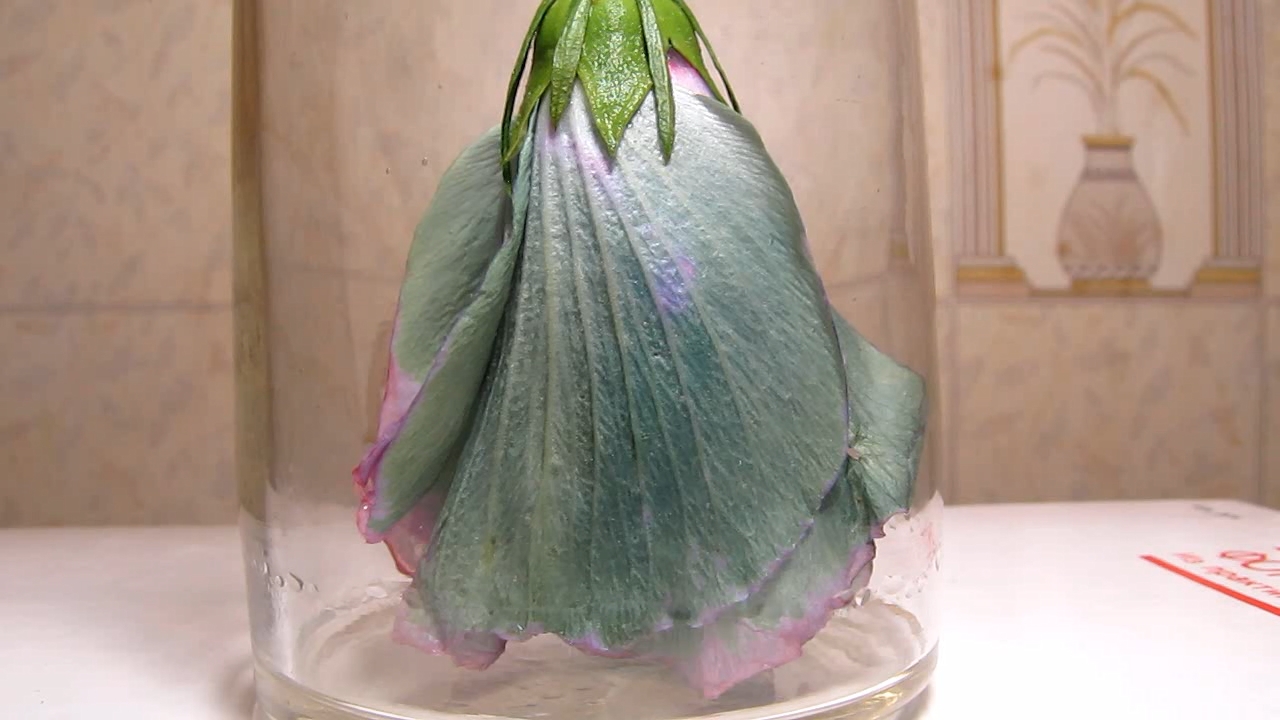
|
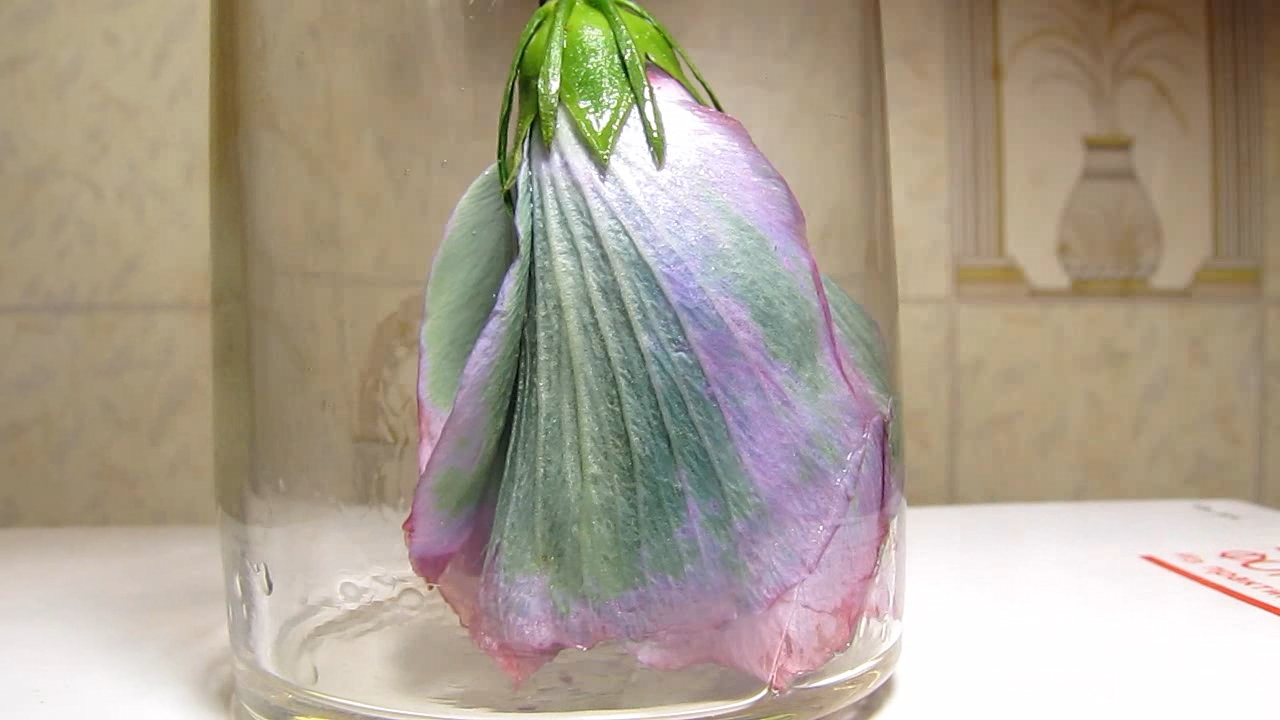
|

|

|

|
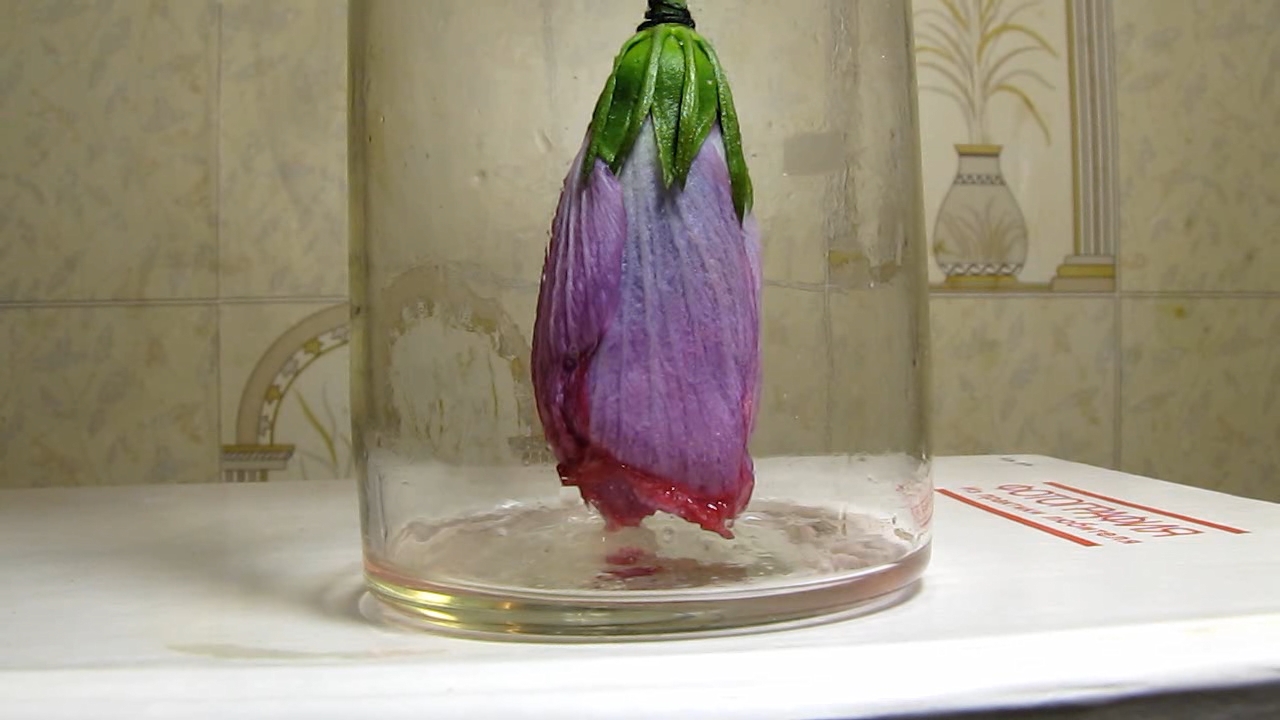
|

|
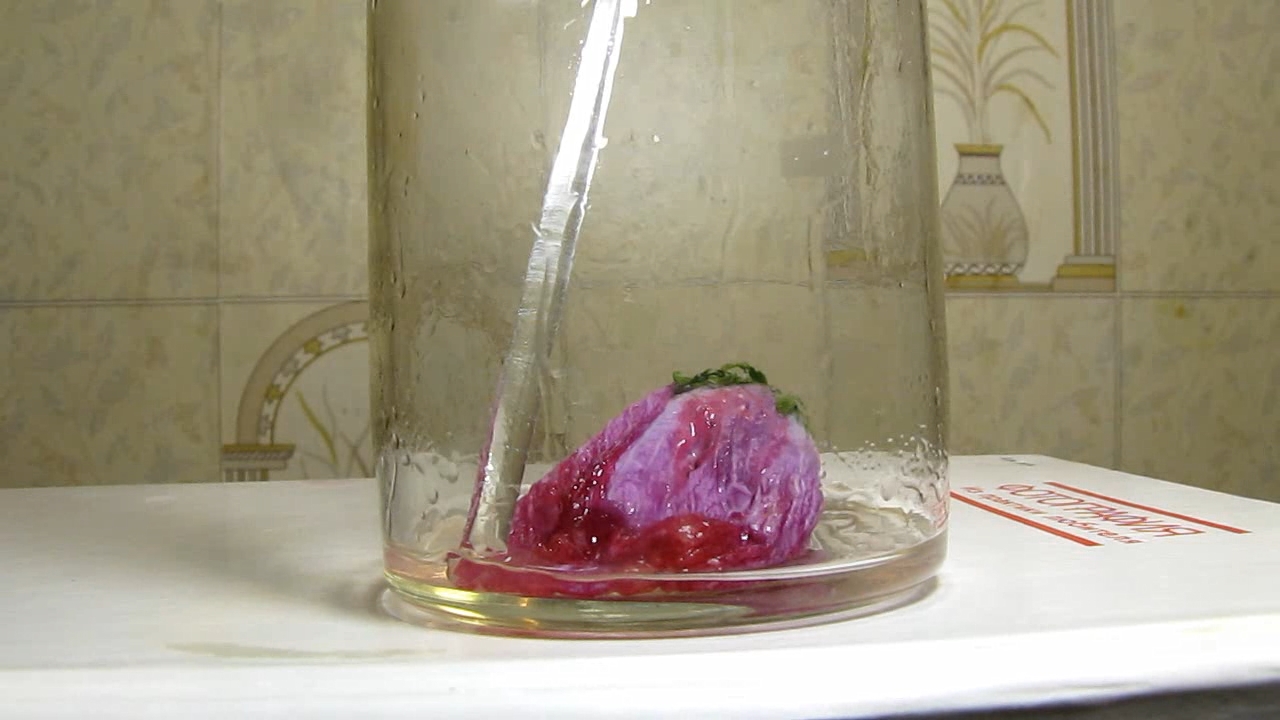
|
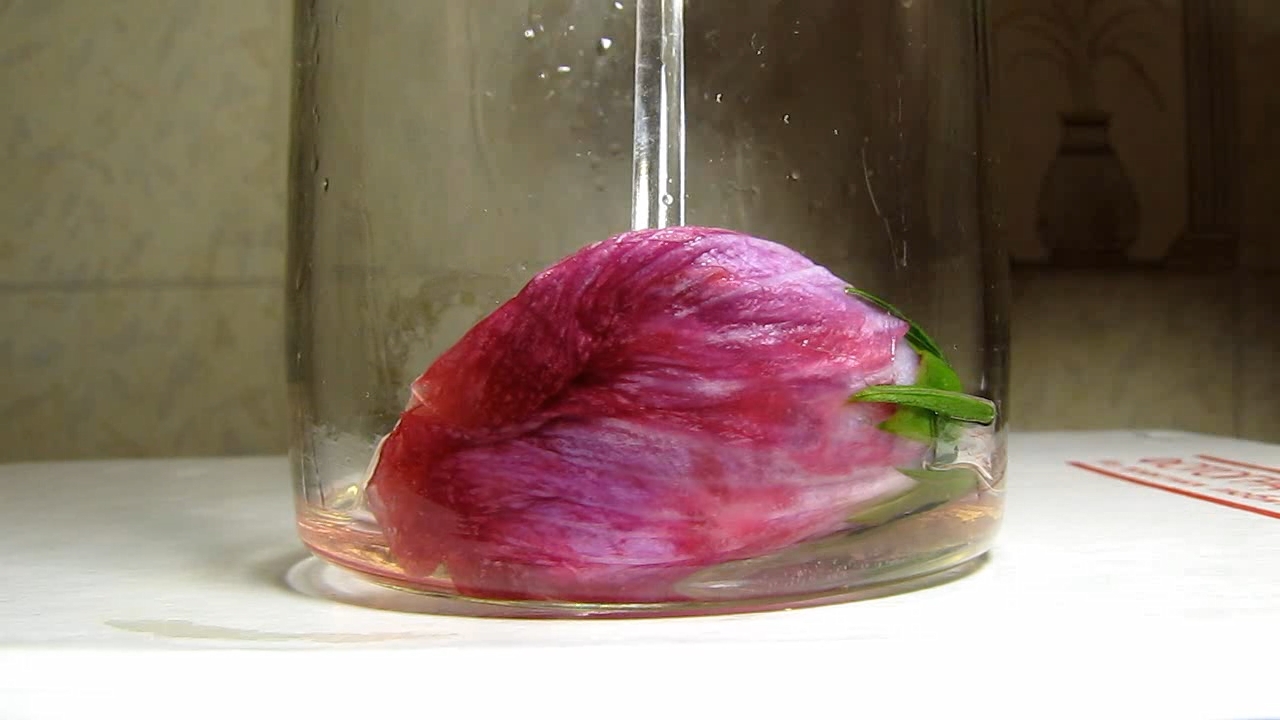
|

|
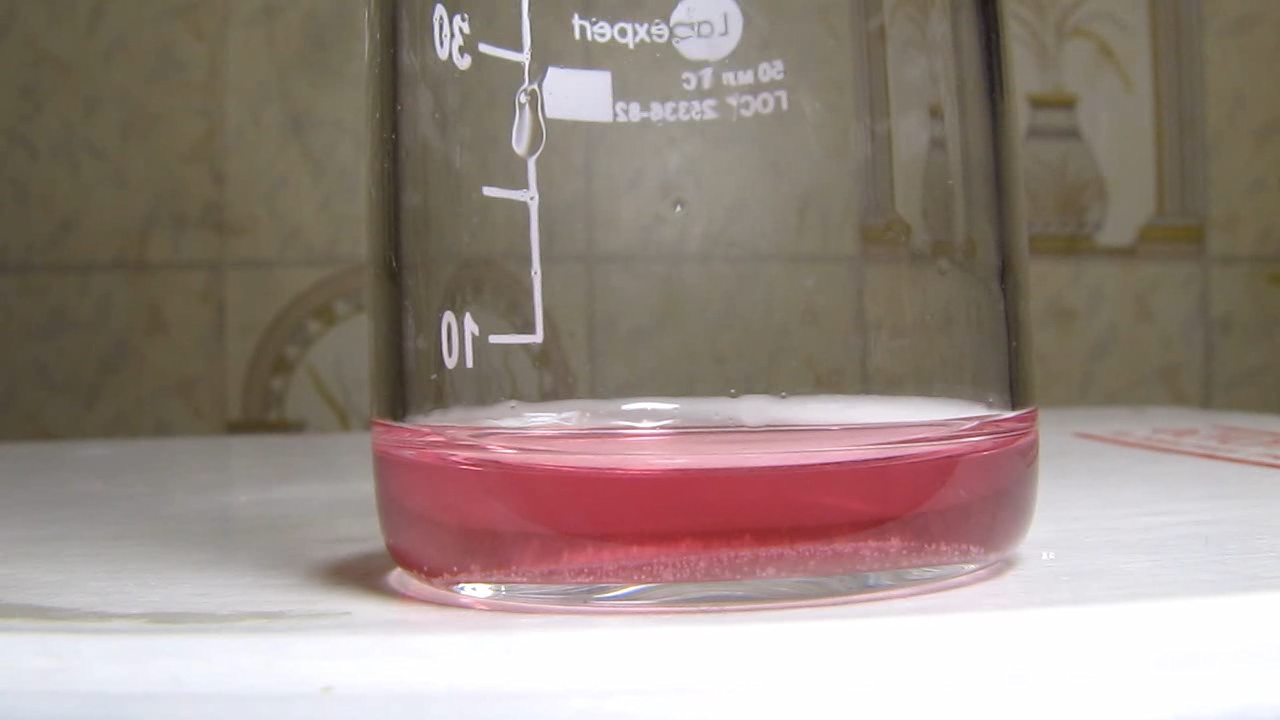
|

|

|
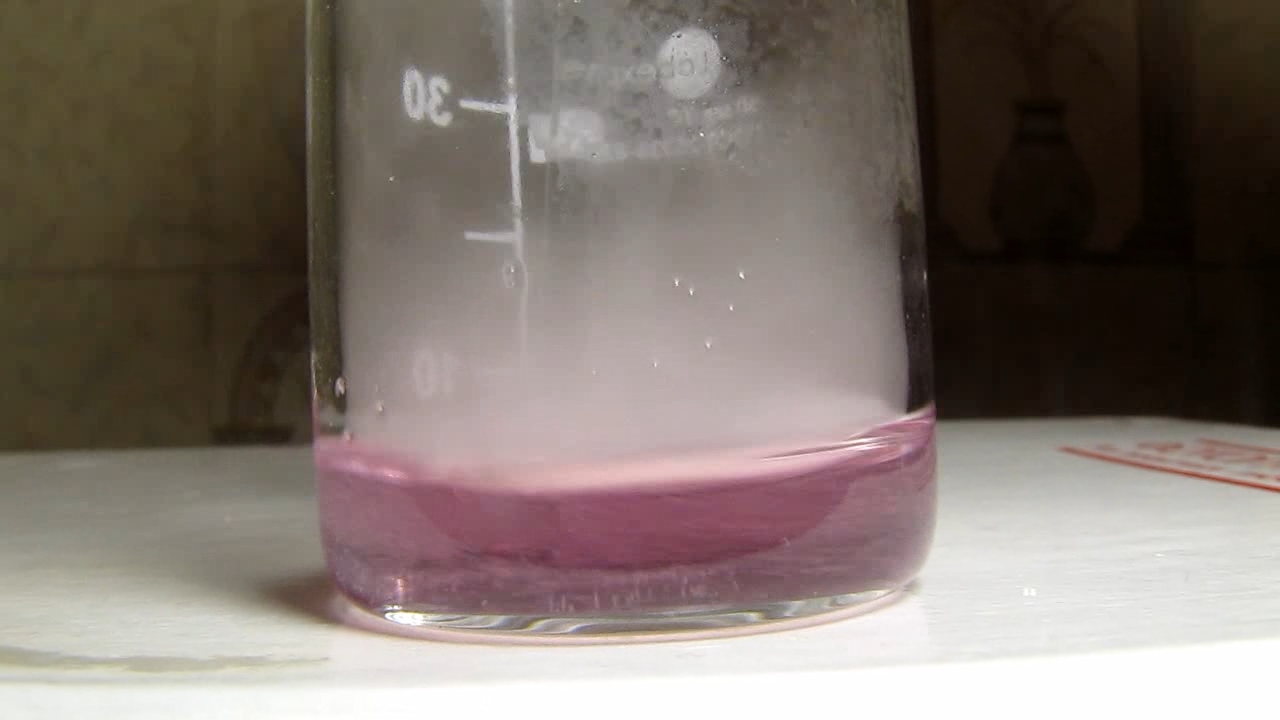
|

|
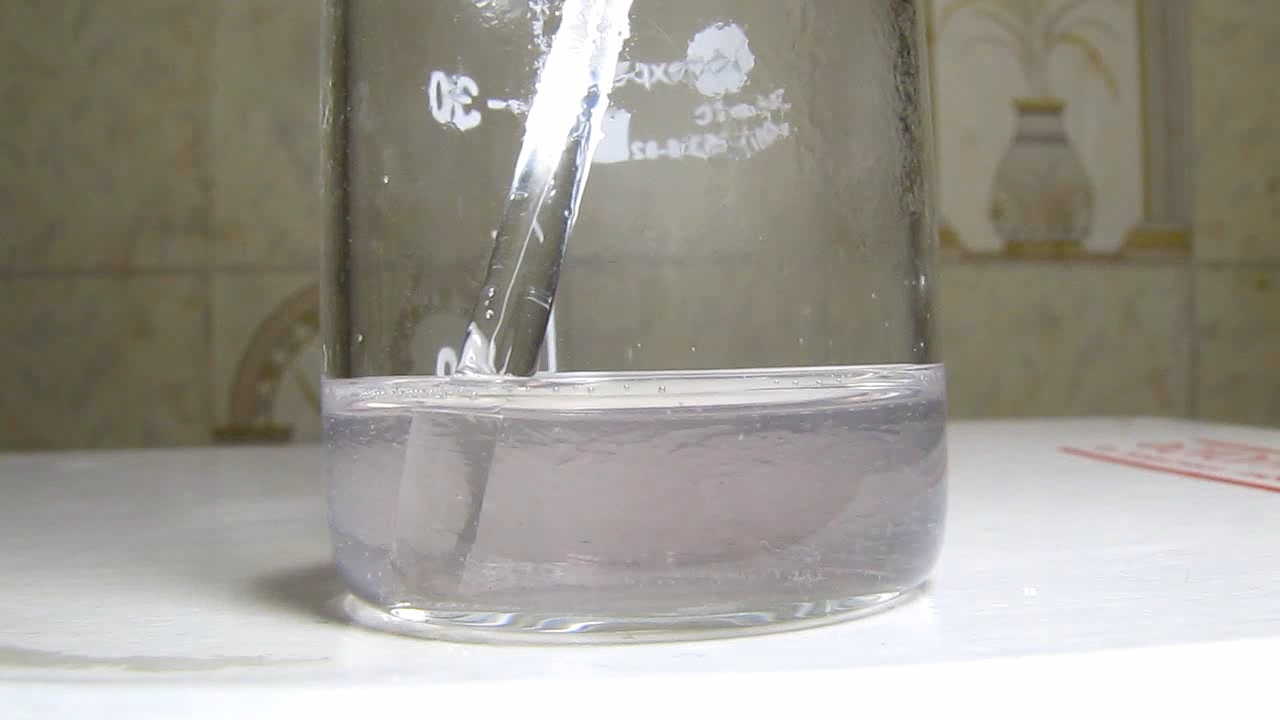
|

|

|
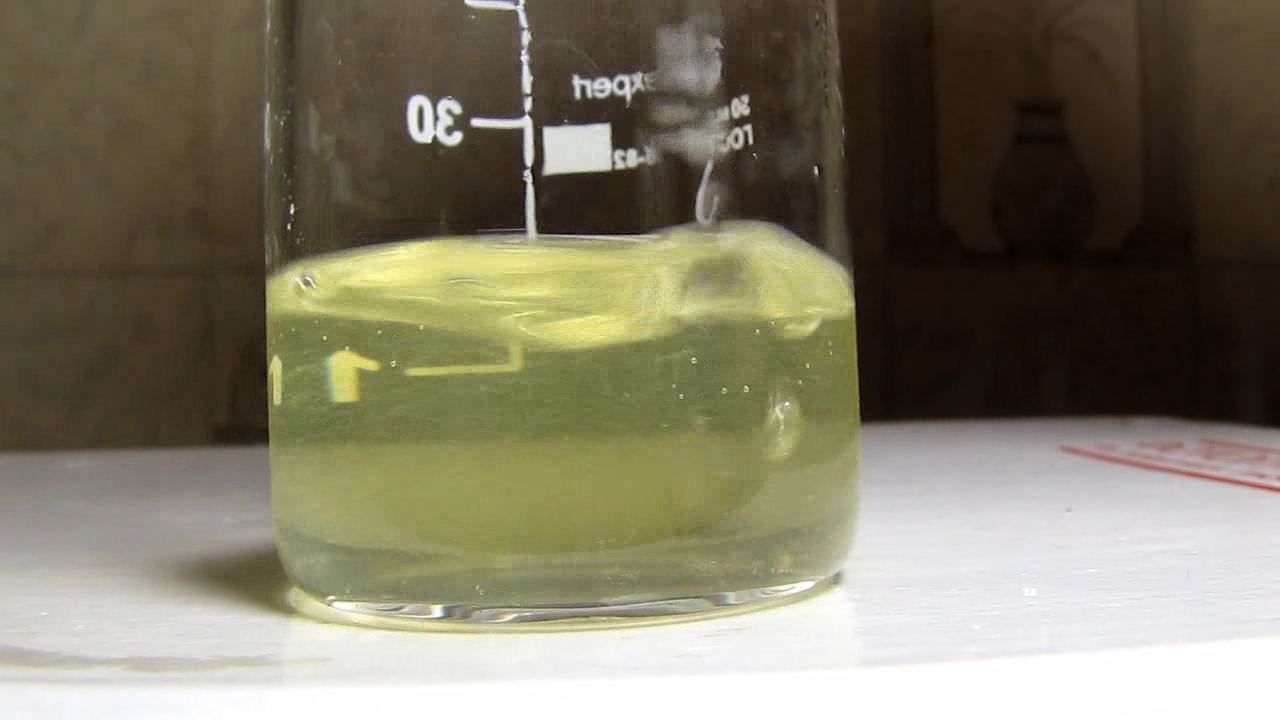
|
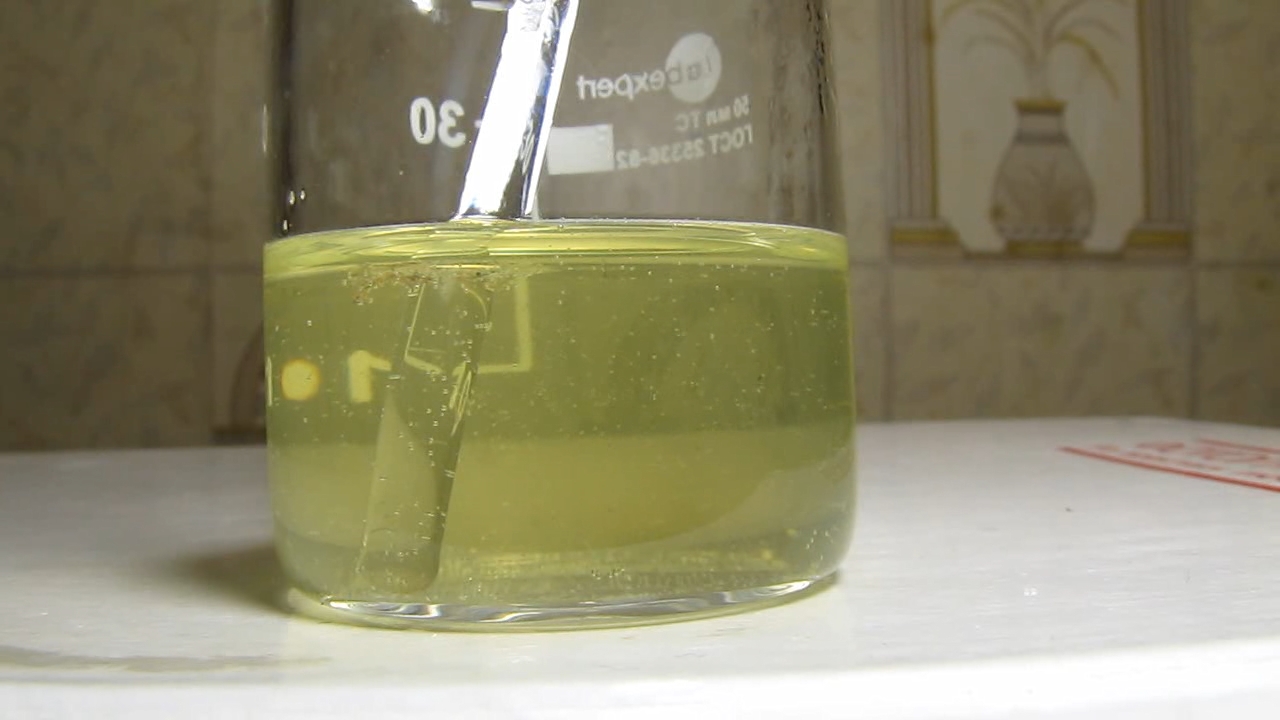
|
|
Upd.
After the experiment I went back to the Hibiscus Syriacus tree to take some better photos. Suddenly I saw that my previous observations were not accurate. During all time of flowing, the petals of the flowers are pink. The pink petals turn blue as the flowers are fading (but when the buds are opening, the petals are pink not blue). Fortunately, it does not change general conclusions: the pH change in tissue leads to the change of the colour of the plant dye. And at this time, the flowers are on the tree, not in the beaker (with ammonia). |
|
Upd.
После эксперимента я вернулся к дереву Hibiscus Syriacus, чтобы сделать несколько фотографий получше. Внезапно увидел, что мои предыдущие наблюдения были неточными. Все время цветения лепестки цветков розовые (не синие). Розовые лепестки становятся частично синими, когда цветы увядают (зато когда бутоны раскрываются, лепестки розовые, а не синие). К счастью, это не меняет общих выводов: изменение рН в растительной ткани приводит к изменению окраски растительного красителя. И в это время цветок находится на дереве, а не в химическом стакане (с аммиаком). |